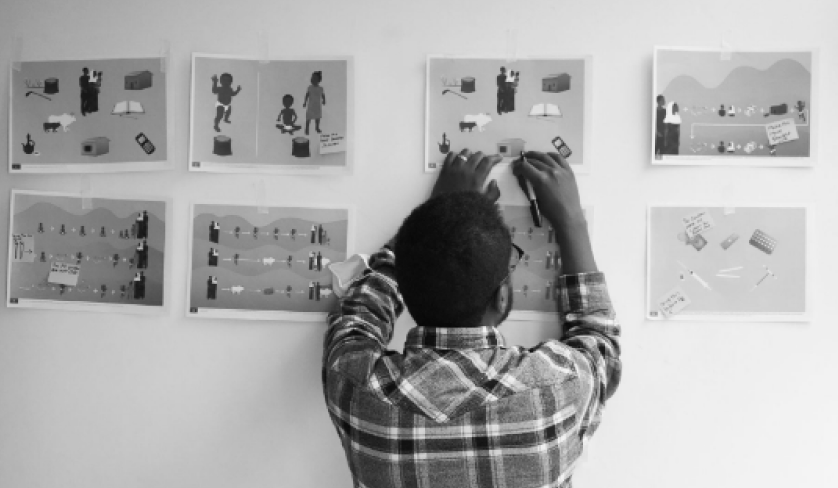︎Design for Public Health & Sanitation & Hygiene
I design health interventions and systems-level solutions for organizations tackling complex public health challenges in low-resource settings. My work spans maternal and child health, healthcare delivery, sanitation and hygiene, and health behavior change, blending user research with strategic analysis to strengthen health systems and improve outcomes. By synthesizing insights from diverse stakeholders, I develop evidence-based solutions that enhance healthcare access and drive measurable impact for underserved populations.
︎

Immunization Accelerator
Program Across East Africa
This project leveraged human-centered design to empower grassroots organizations across Kenya, Tanzania, Somalia, and Uganda in developing innovative immunization solutions. Through sustained piloting, testing, and mentorship, we guided these organizations toward user-ready solutions that could influence broader health ecosystems and create lasting community impact.
PROJECT IMMUNIZATION ACCELERATOR PROGRAM
SECTOR PUBLIC HEALTH
ORGANISATION OPENIDEO
ROLE HUMAN CENTERED DESIGN | WORKSHOP FACILITATION
| VISUAL STORYTELLING | SUPPORT & MENTORING ORGANISATION
SECTOR PUBLIC HEALTH
ORGANISATION OPENIDEO
ROLE HUMAN CENTERED DESIGN | WORKSHOP FACILITATION
| VISUAL STORYTELLING | SUPPORT & MENTORING ORGANISATION
LOCATION KENYA, TANZANIA, SOMALIA & UGANDA
PROJECT DURATION 6 MONTHS
TEAM SIZE 4
CONTENT COURTESY OPENIDEO
PROJECT DURATION 6 MONTHS
TEAM SIZE 4
CONTENT COURTESY OPENIDEO
HUMAN CENTERED DESIGN | USER JOURNEYS | ECOSYTEM MAP | QUALITATIVE INTERVIEWS | SYNTHESIS WITH TEAM | EVALUATION MATRIX | SYSTEMS MAP | DESIGNING OF COMMUNICATION ASSETS


Field research across 4 remote communities
revealed the intricate relationships
between culture, customs, and health service delivery.



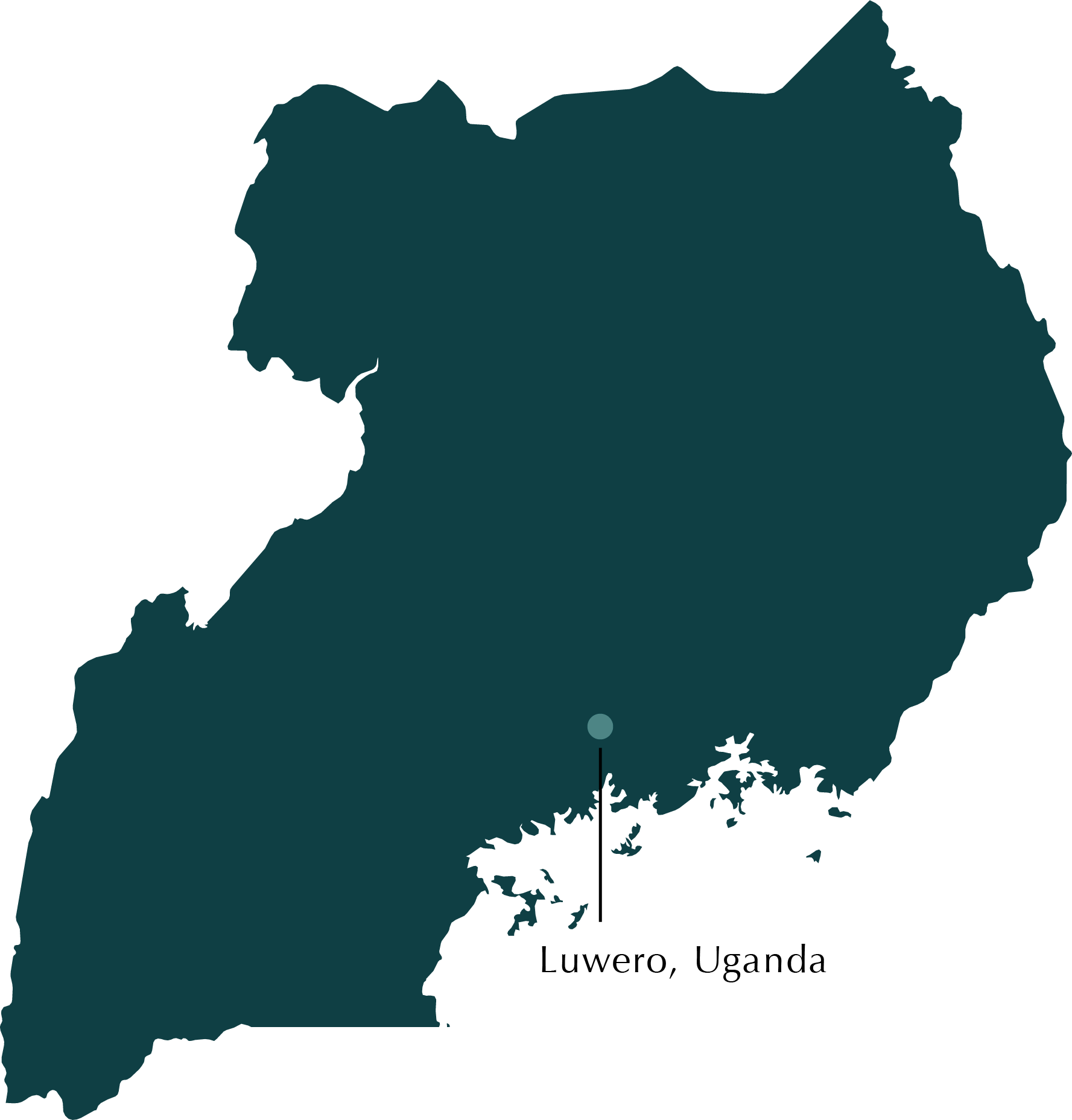
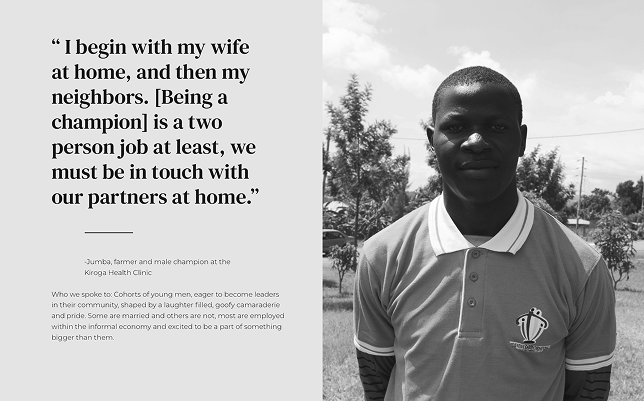
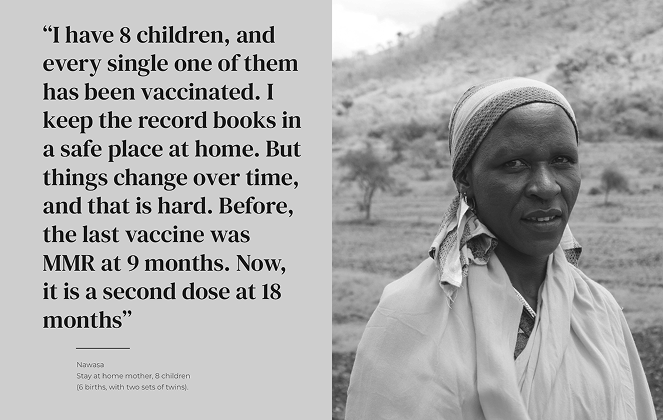

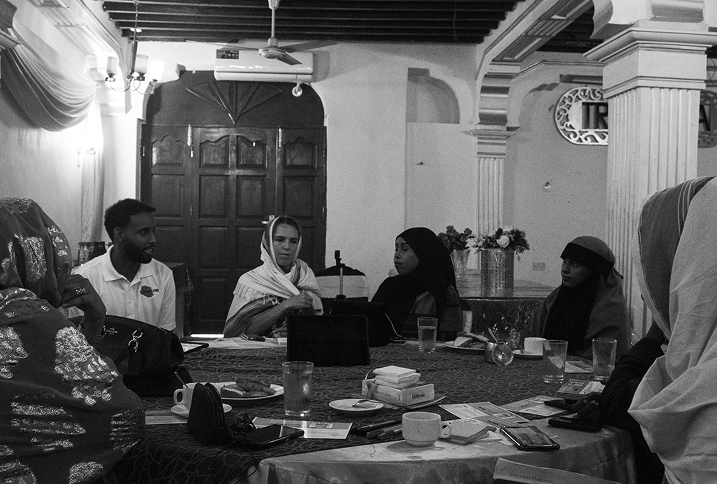

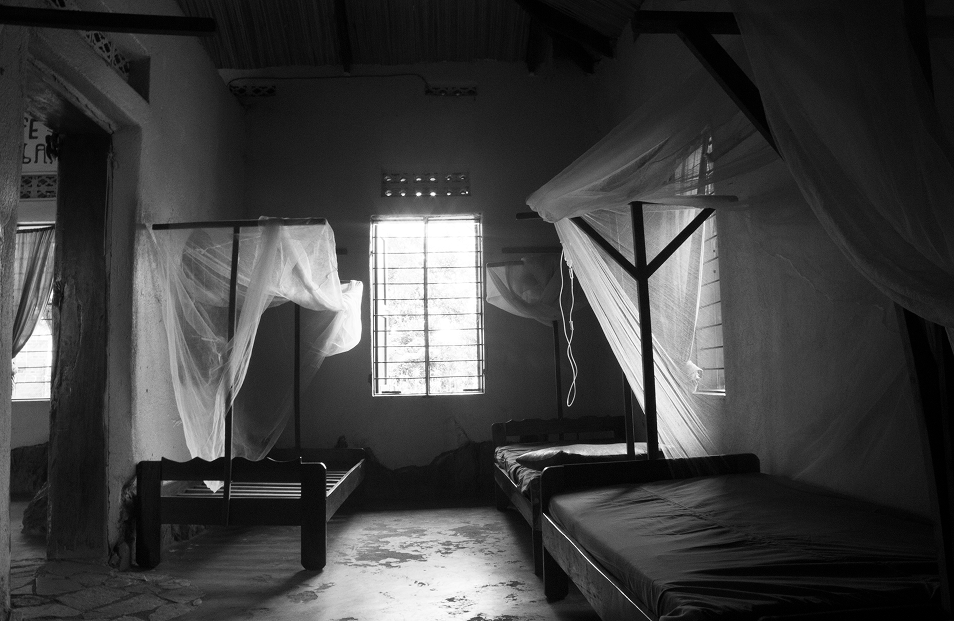
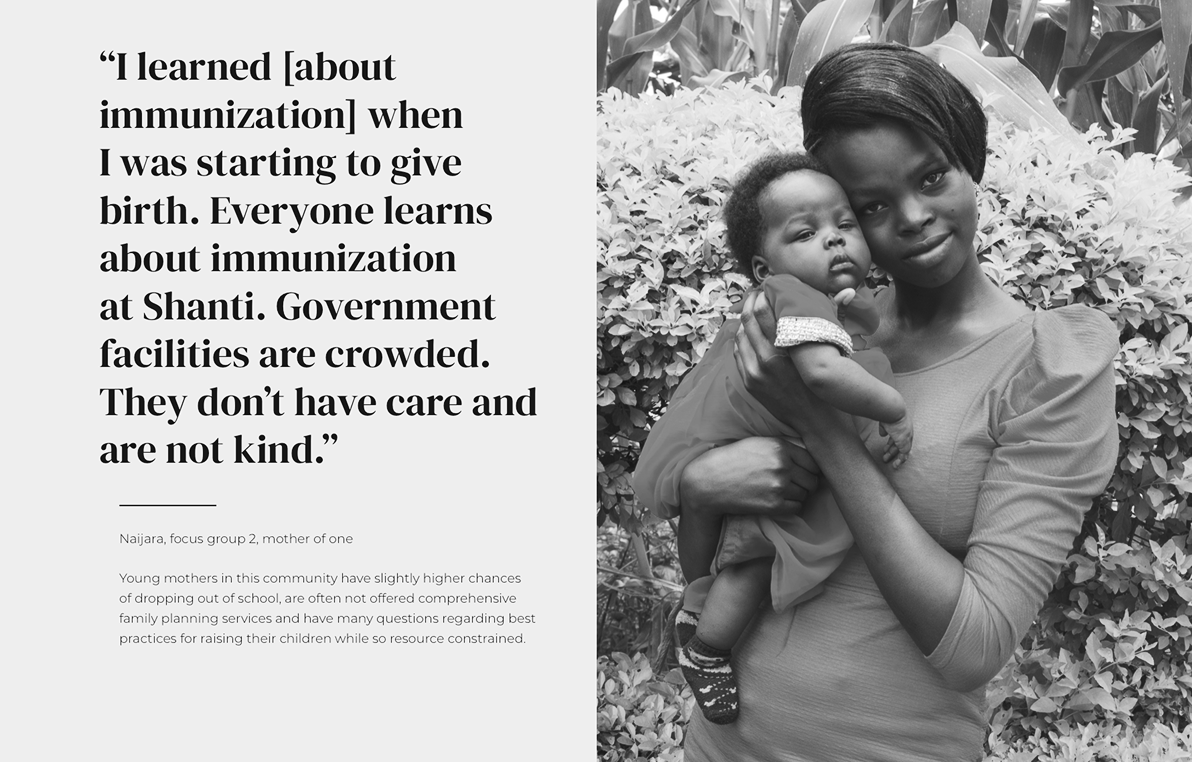
01
02
03
Stories from the field
Hearing personal stories from different stakeholders and key voices in the community allowed us to develop a more nuanced perspective of the complexity of the health service ecosystem.02
Collecting Insights
Working directly with local organizations provided deep contextual knowledge essential for designing interventions that would resonate within existing community structures rather than disrupting them.03
Resource Allocation
We identified intervention opportunities and began outlining what kind of support would be most effective.I engaged more deeply with a
Maasai community living in Moita Kiloriti,
Northern Tanzania, supporting a grassroots
organisation working with the community.


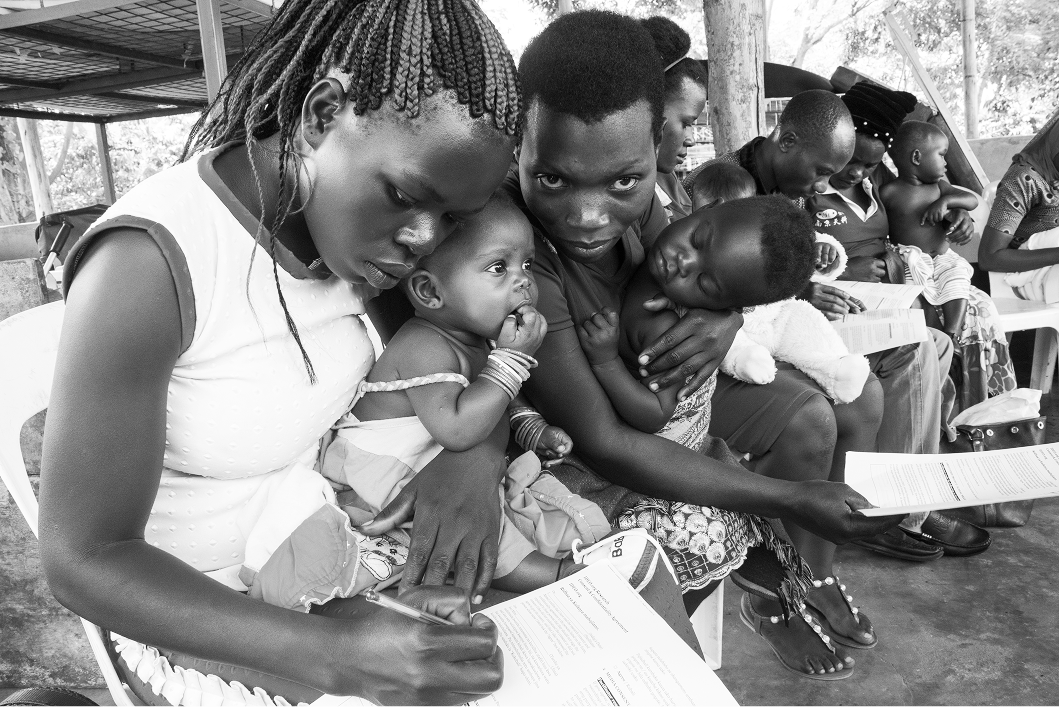
04
Leveraging human centered design to create solutions that aligned with community needs, we recognized that sustainable solutions must emerge from genuine understanding of user experiences and constraints.
05
We gathered personal accounts from mothers, caregivers, husbands, and traditional birth attendants who played crucial roles in the immunization journey. These narratives became primary data, revealing structural barriers and community strengths that surveys typically miss—the nuanced realities behind health decisions and service delivery gaps.
Through extensive fieldwork and stakeholder
engagement, the research process involved
systematic consultation with multiple community actors......

caregivers navigating healthcare decisions,
healthcare providers operating within resource limitations,
traditional birth attendants keeping their traditions alive,
and community leaders influencing local health practices.
06
Co-creation
Through iterative development and community feedback loops, we co-created user-friendly immunization calendars containing vital information, appointment tracking, and adherence nudges. Additionally, we developed baby carriers and bags as motivational incentives to ease clinic transportation while enhancing caregiver standing in the community. The resulting interventions were both evidence-based and community-owned, contributing to improved immunization service delivery.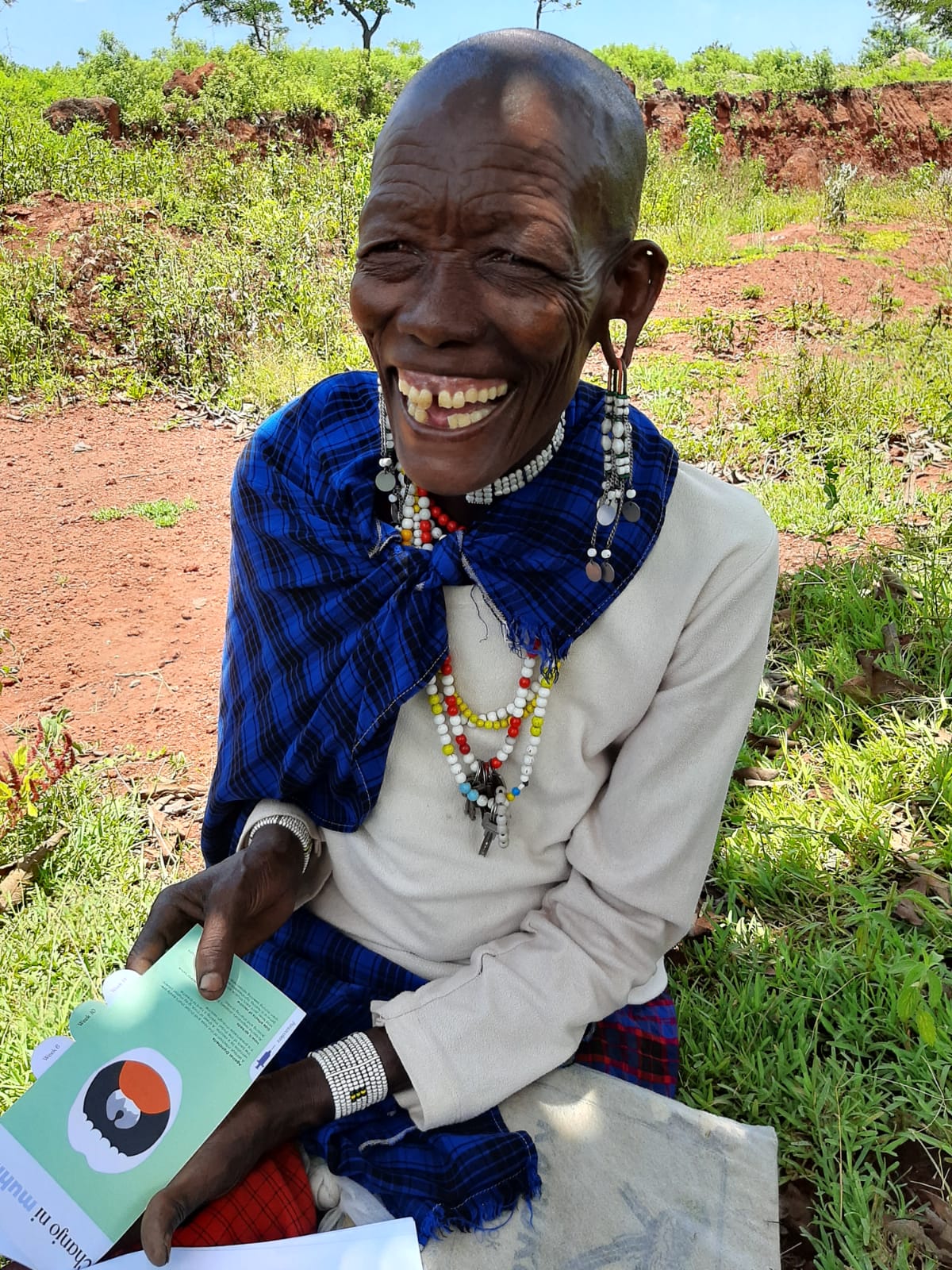
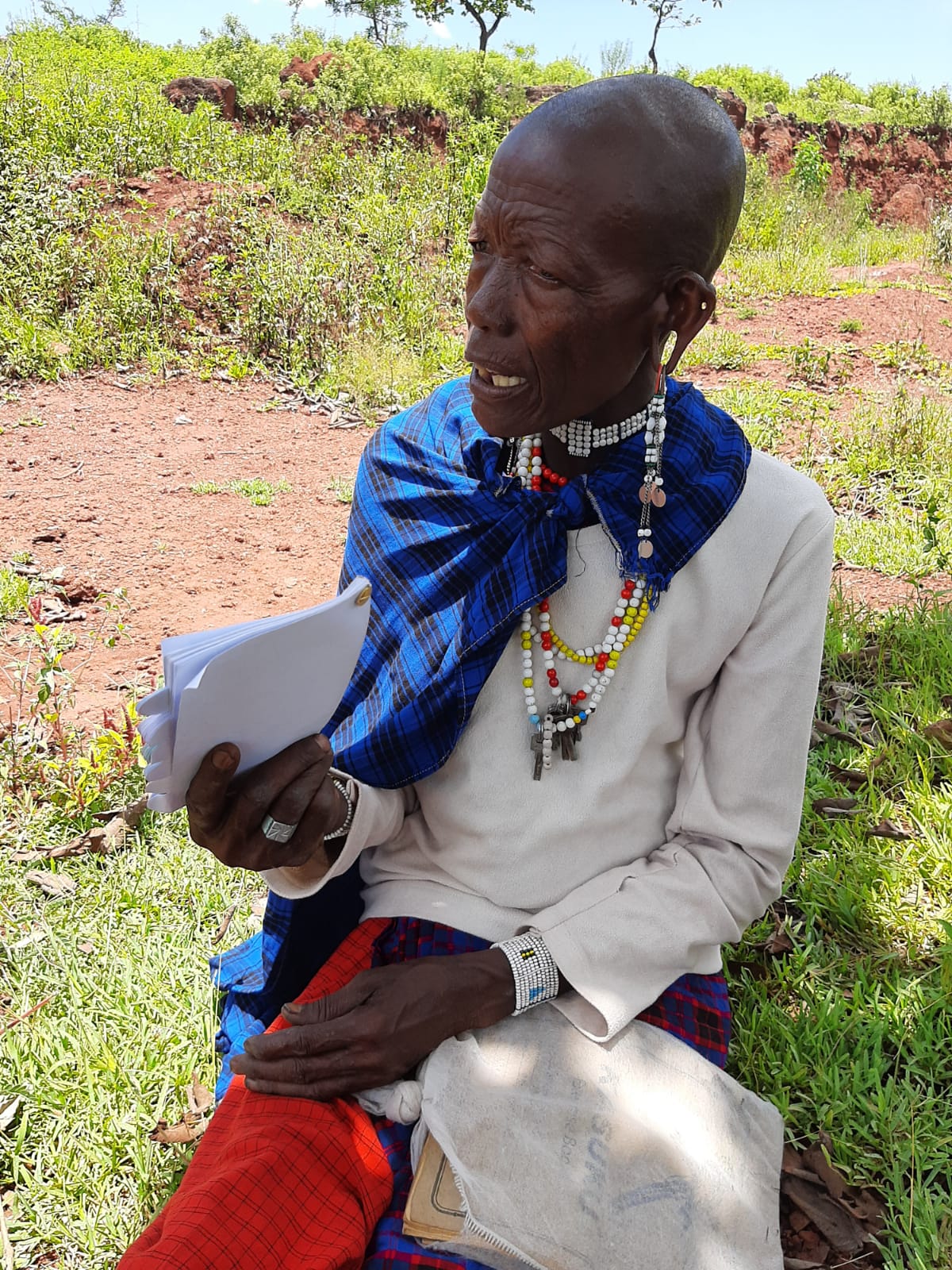


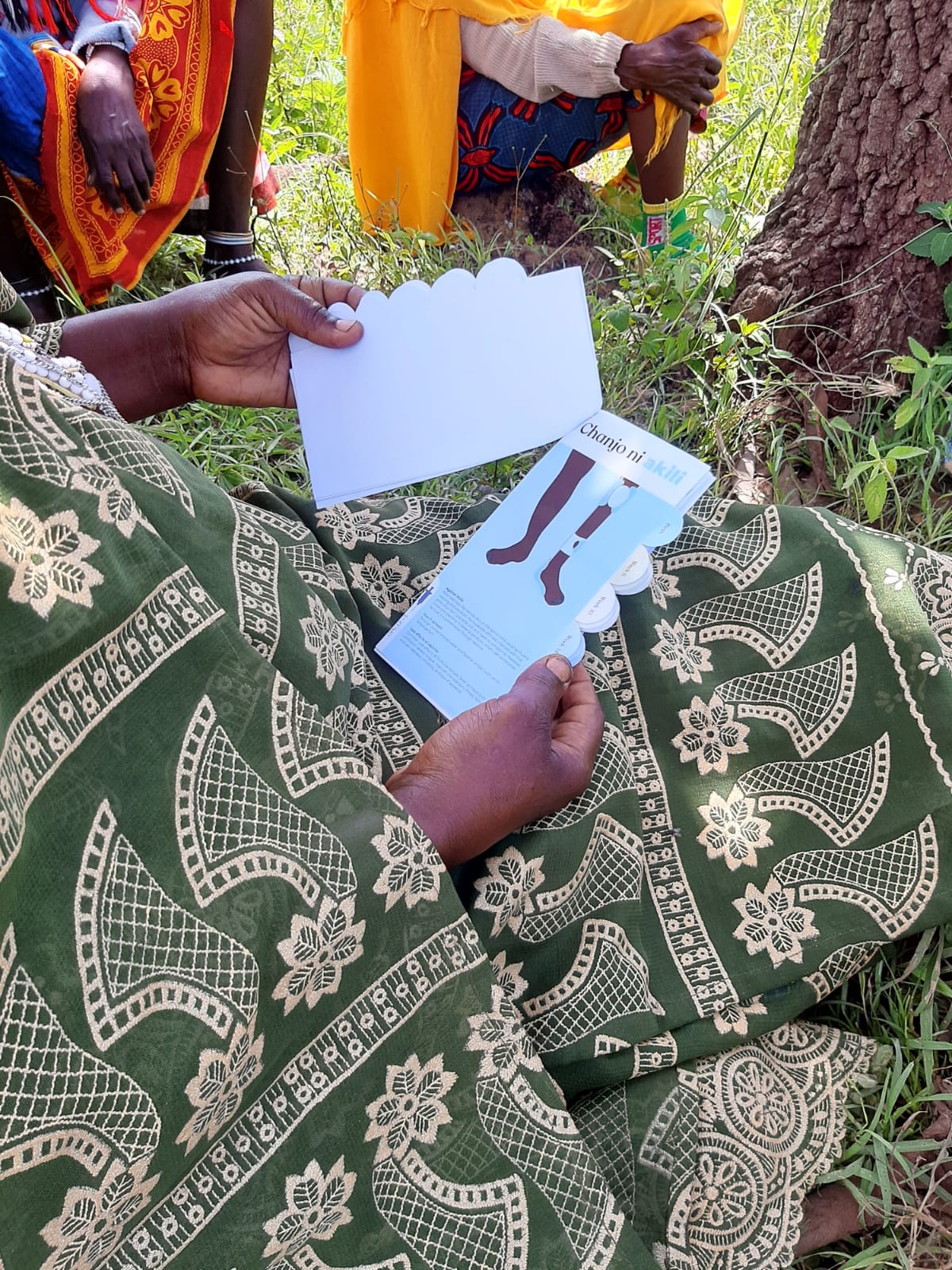
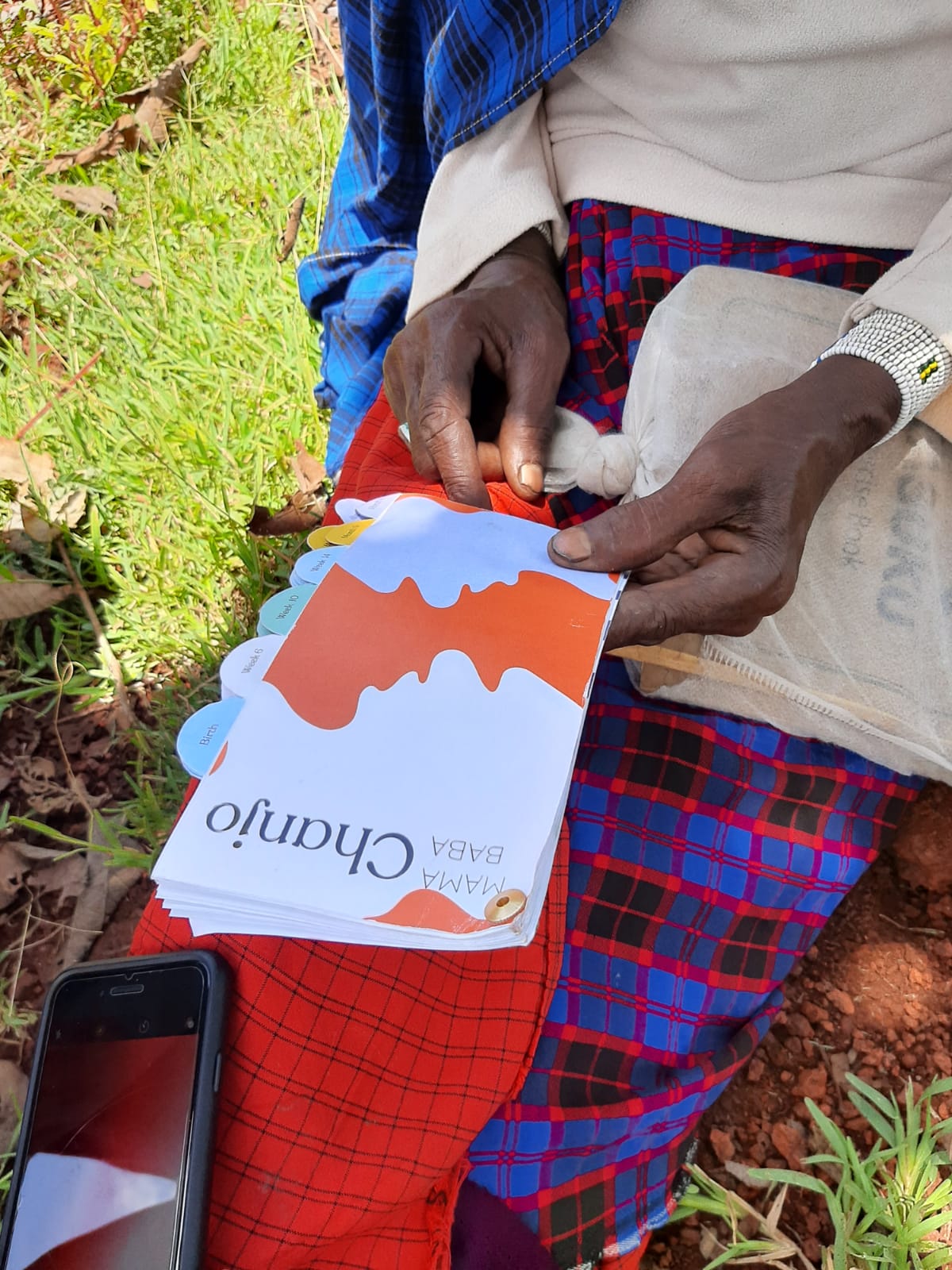
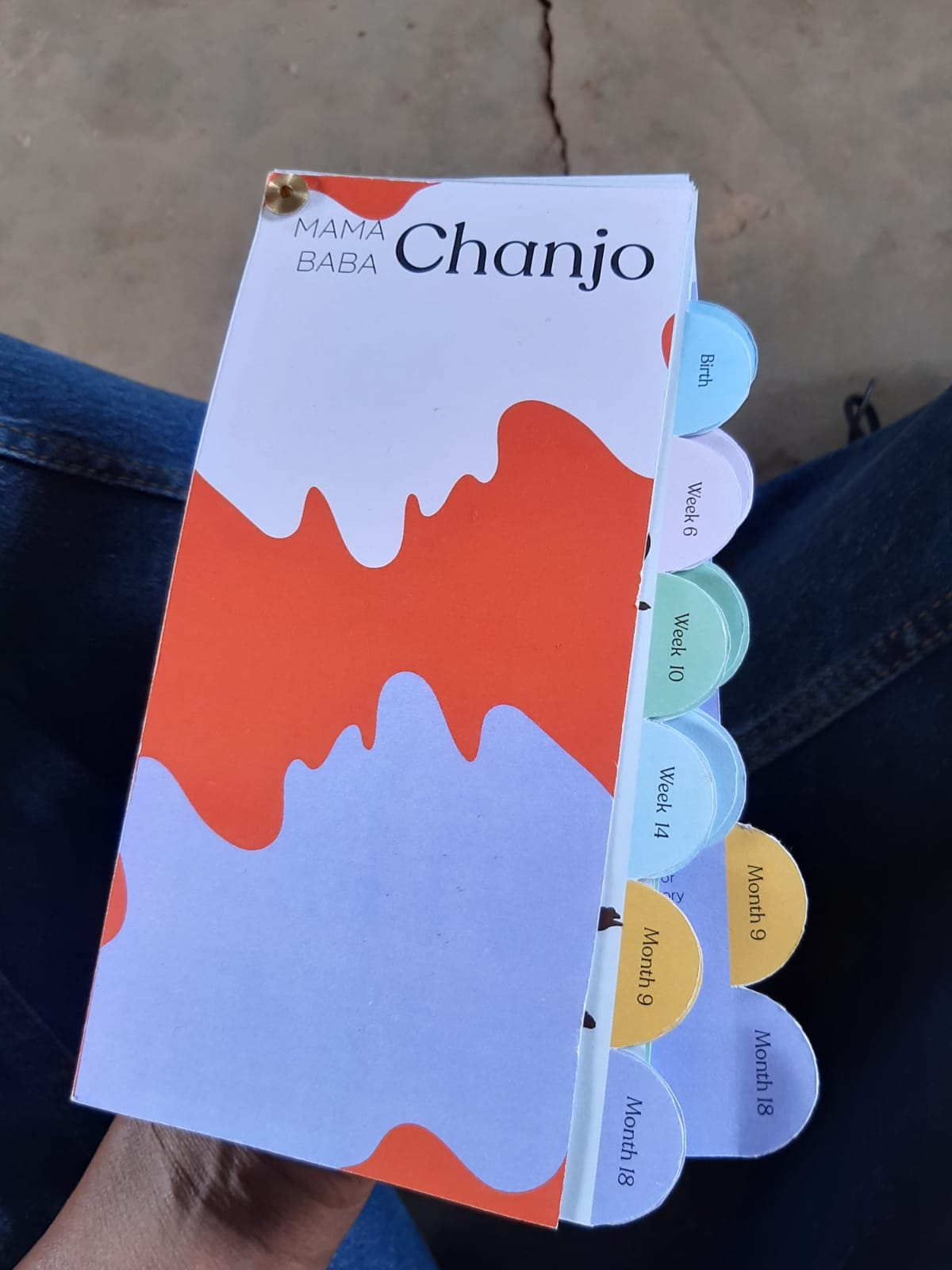

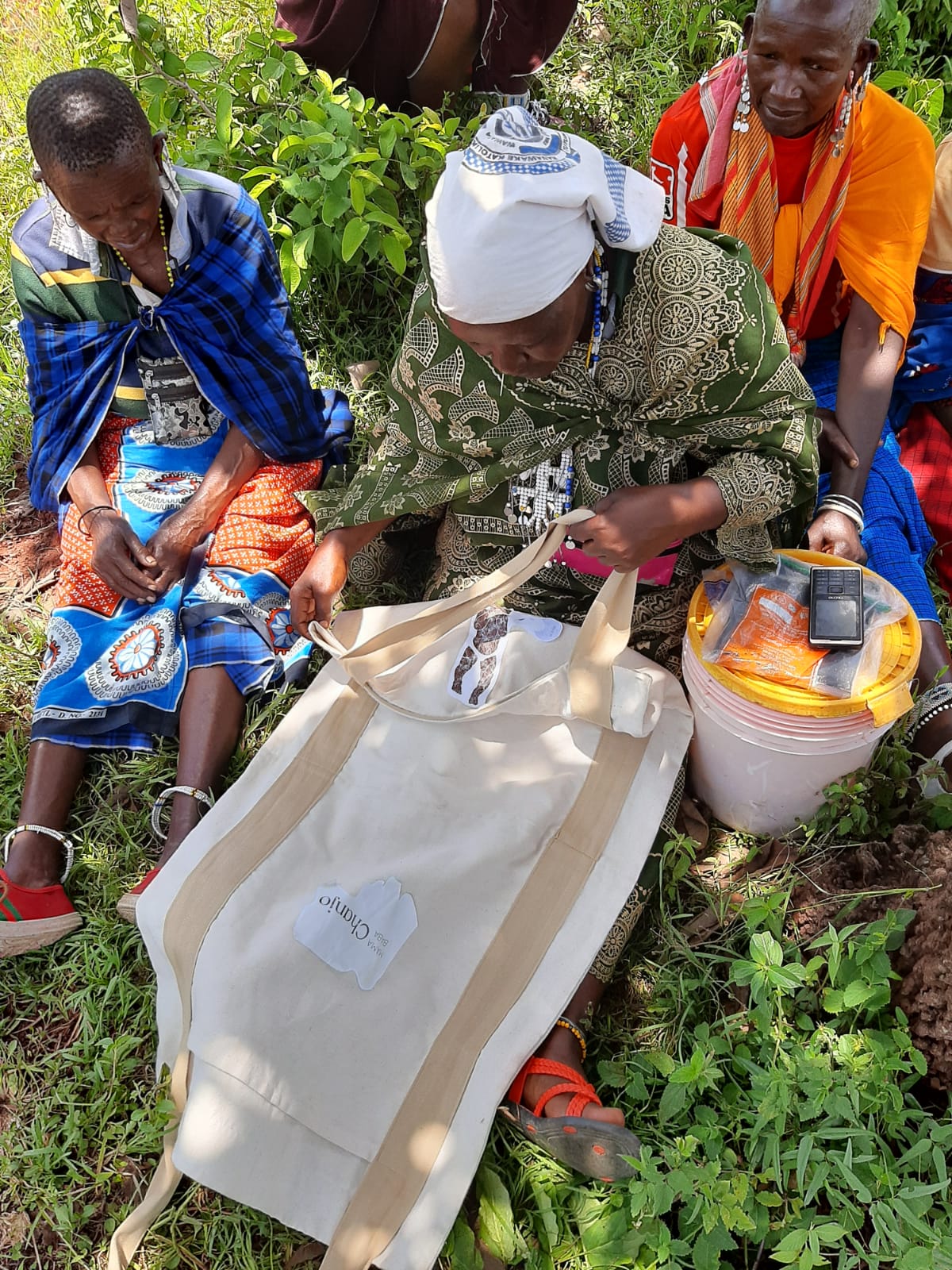

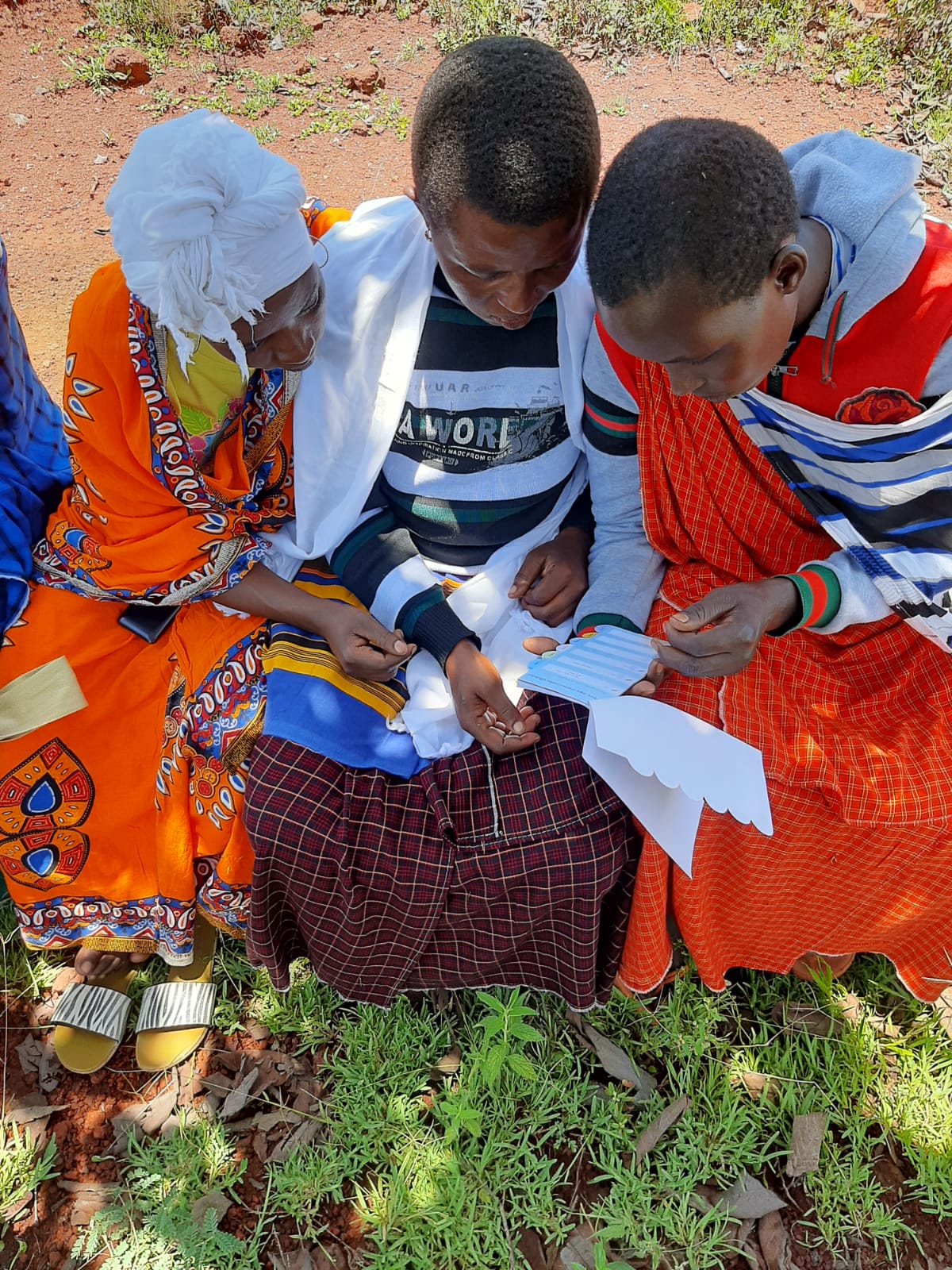
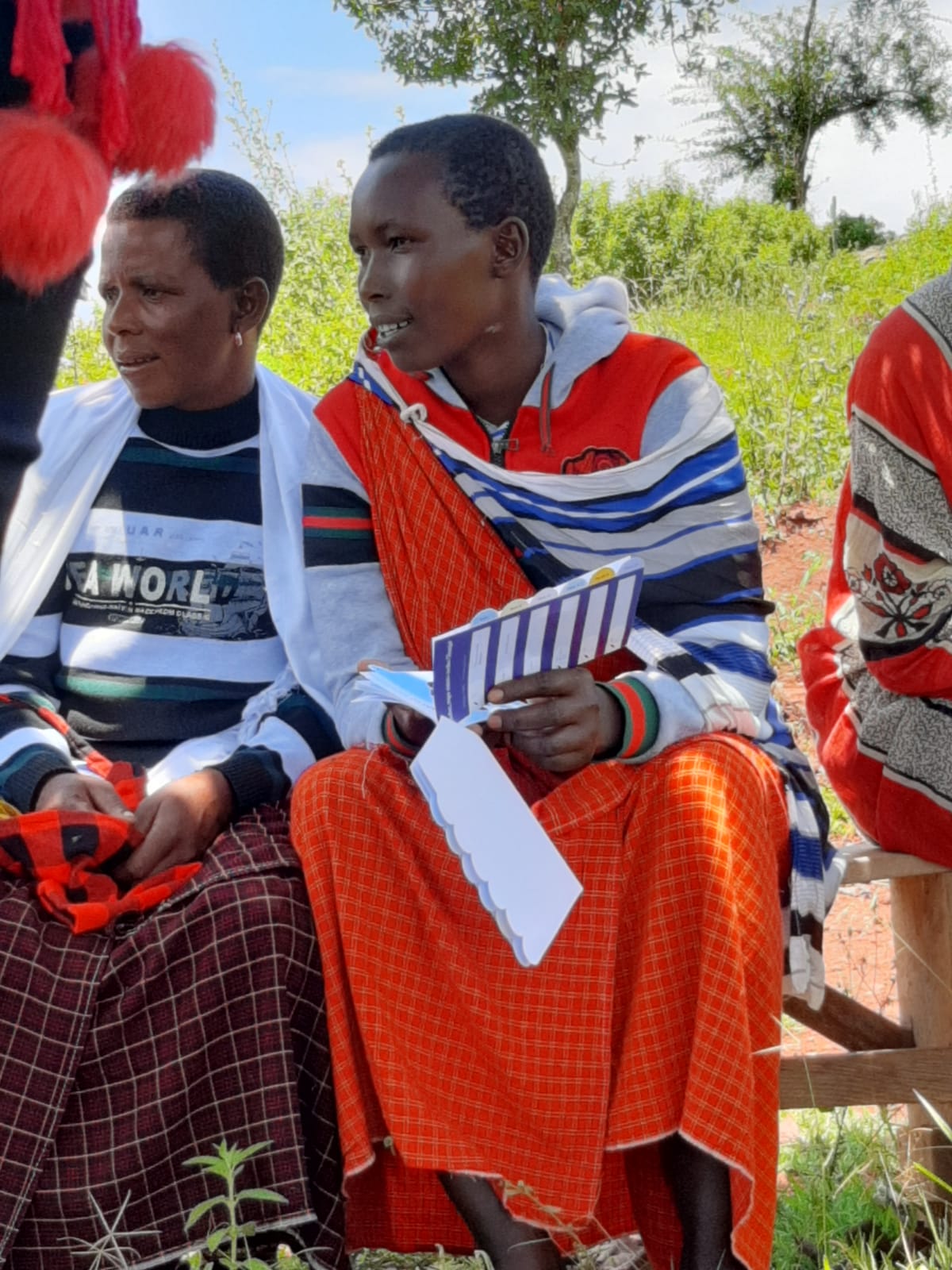
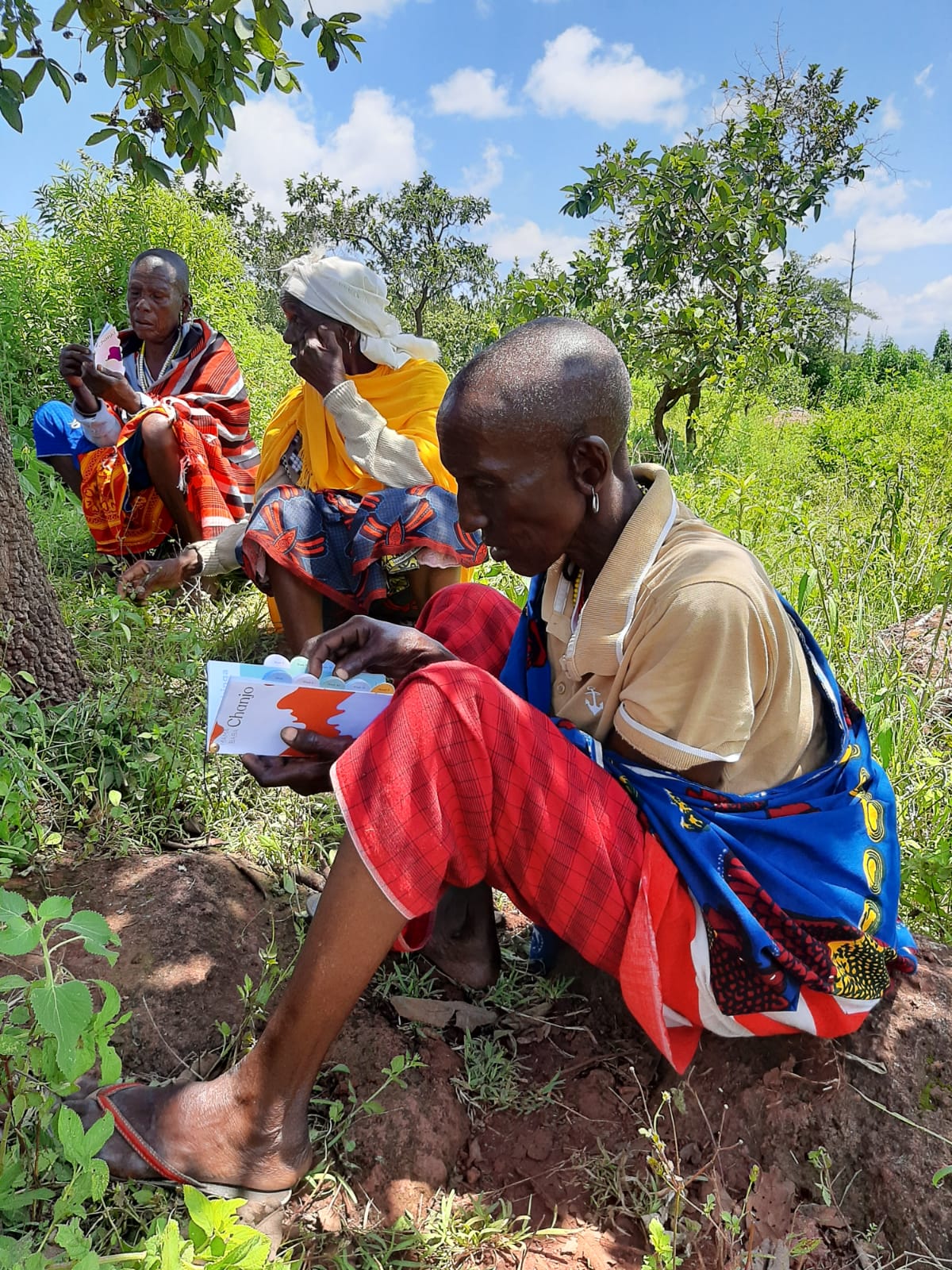
07
The Final Impact Report

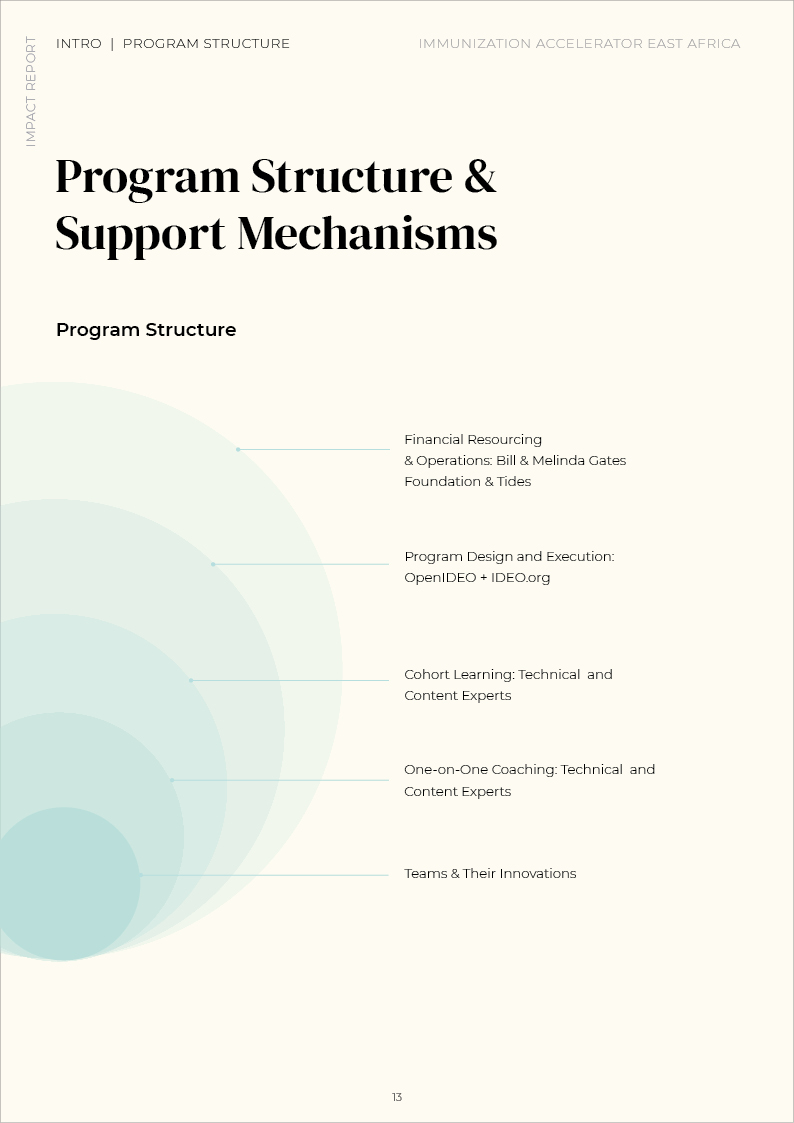
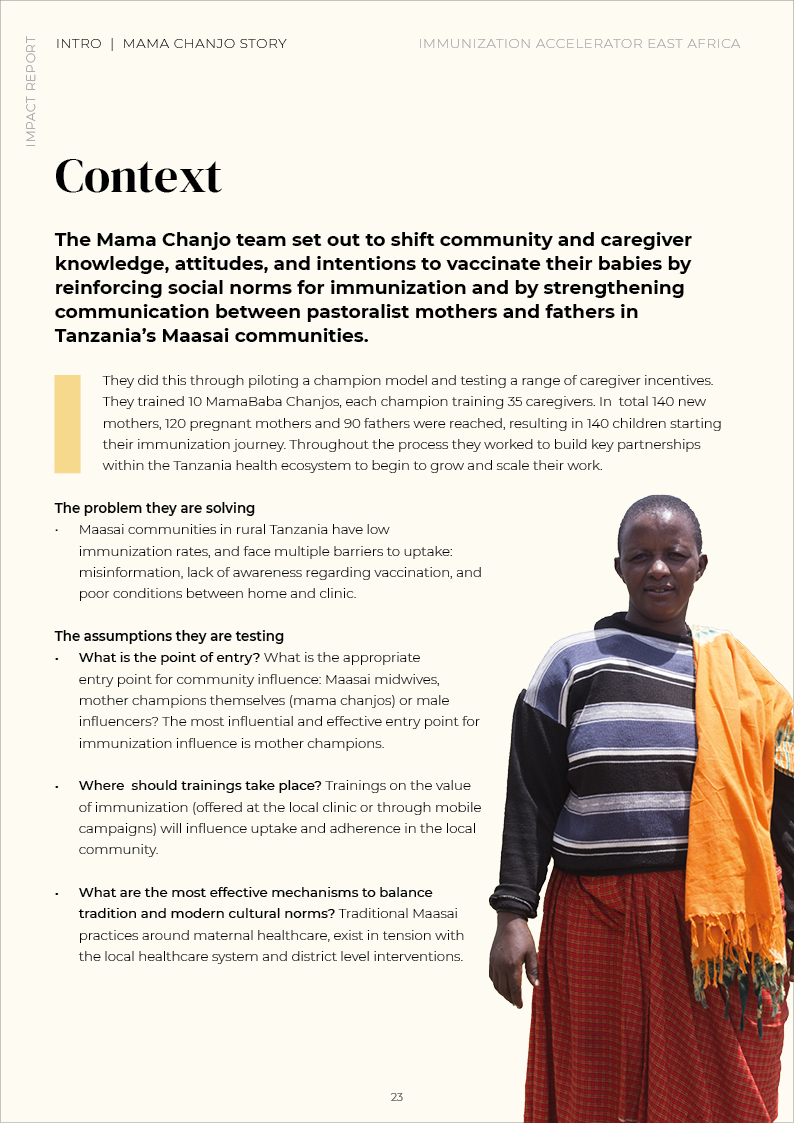









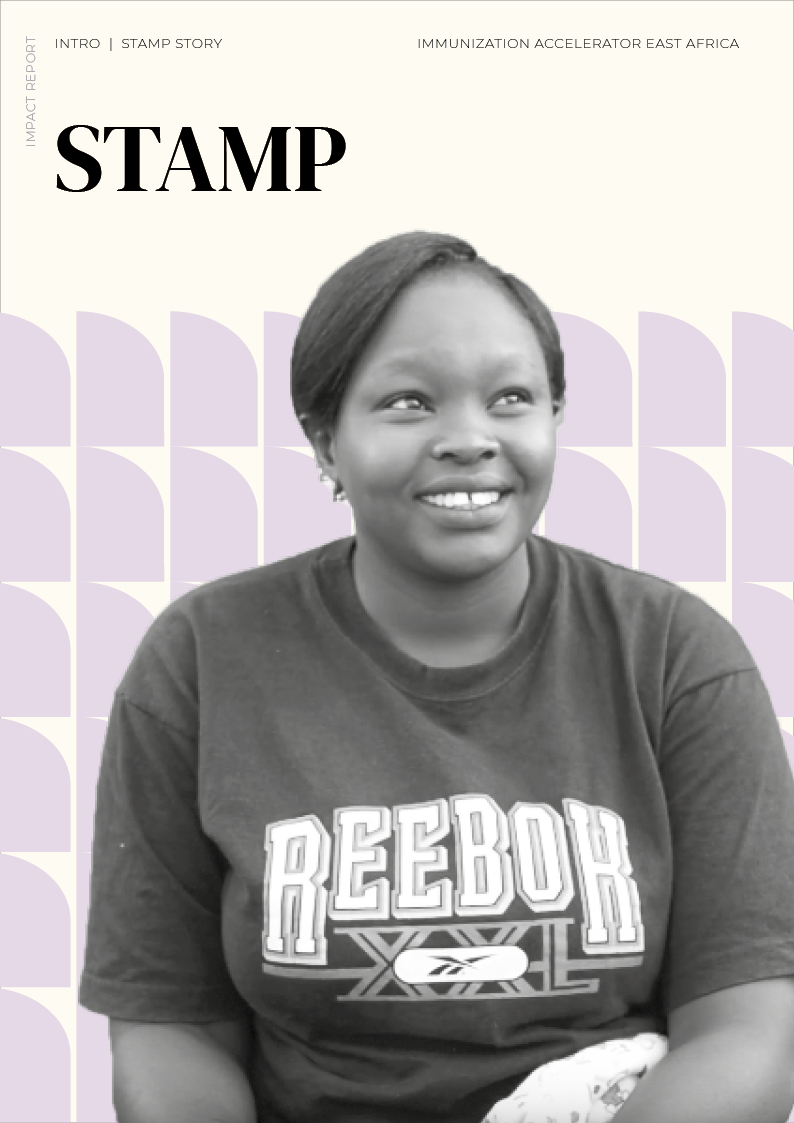








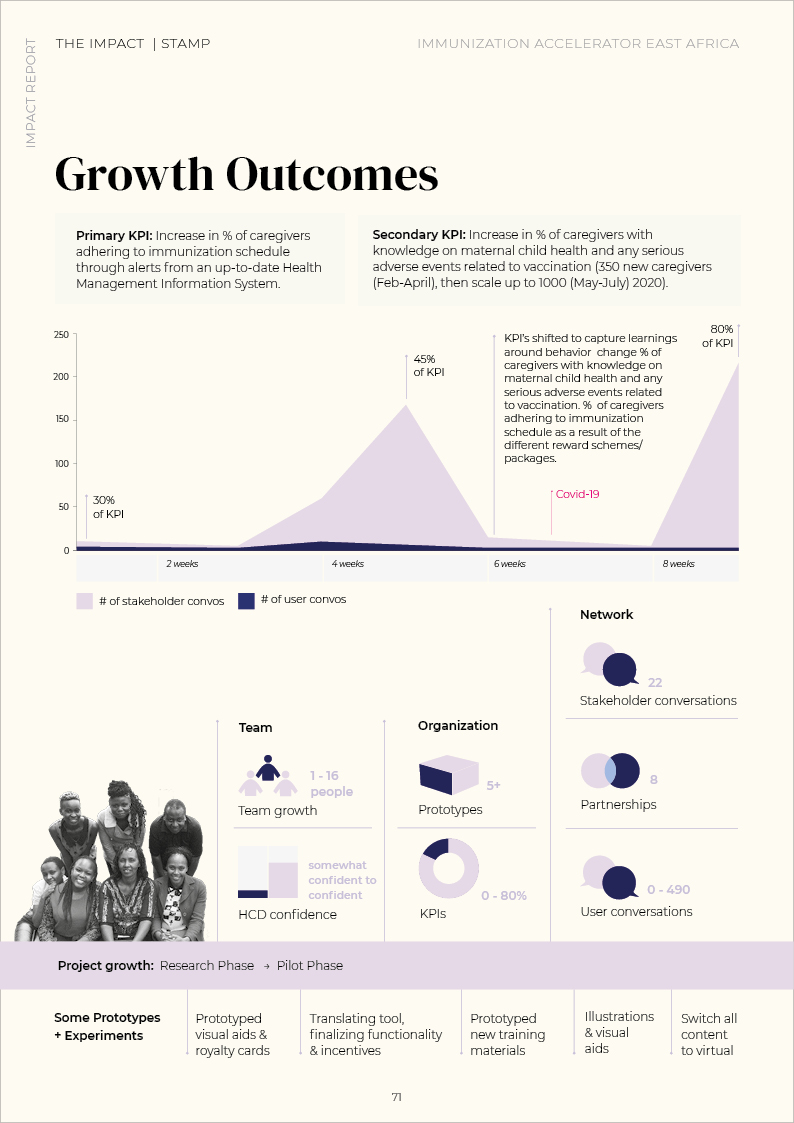



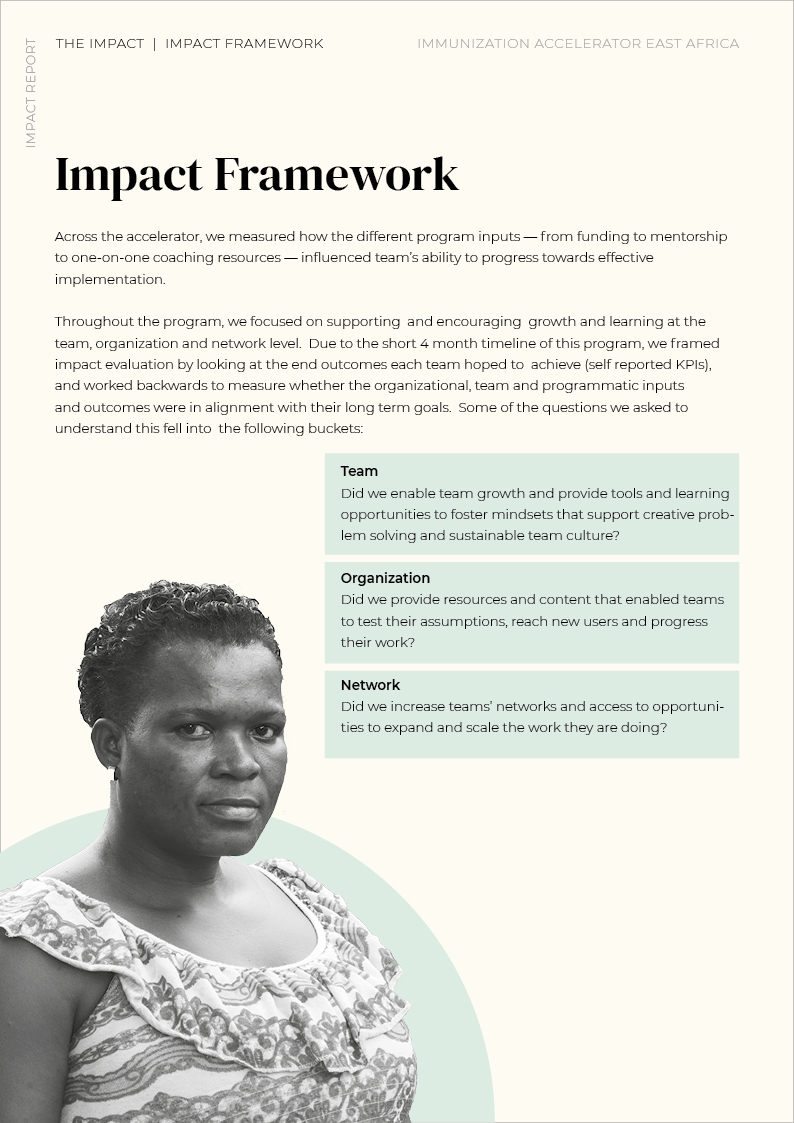
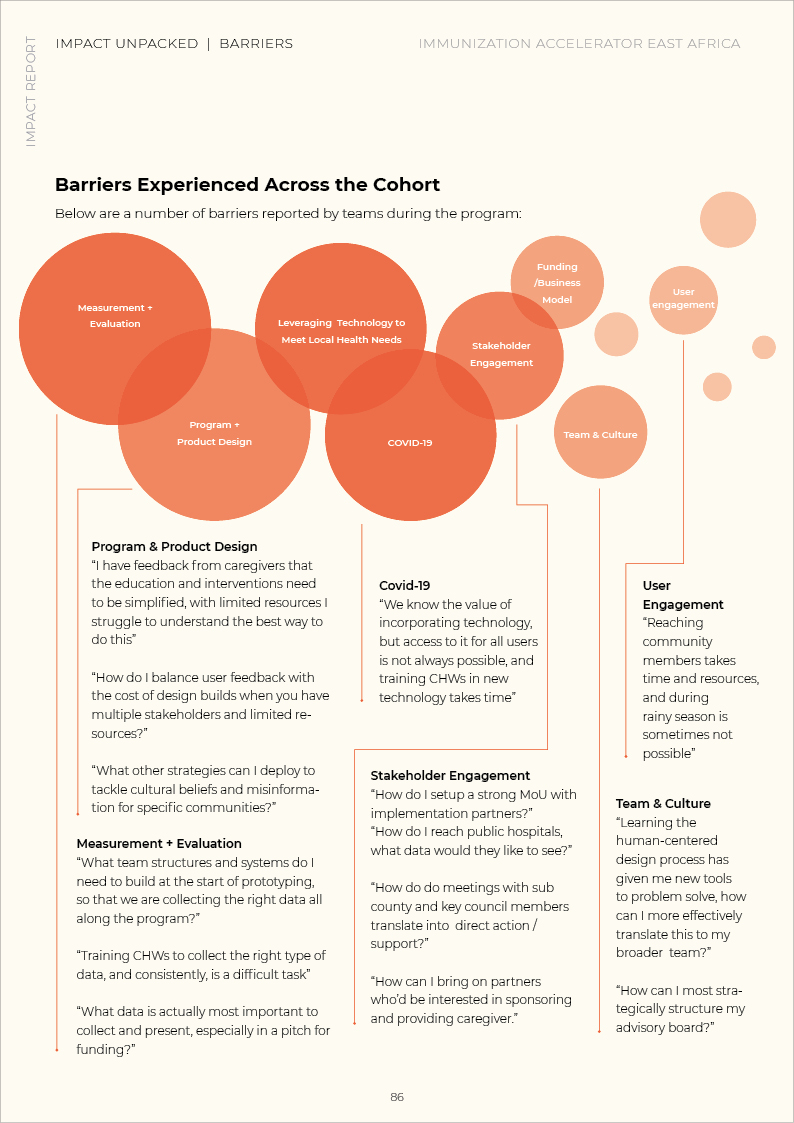


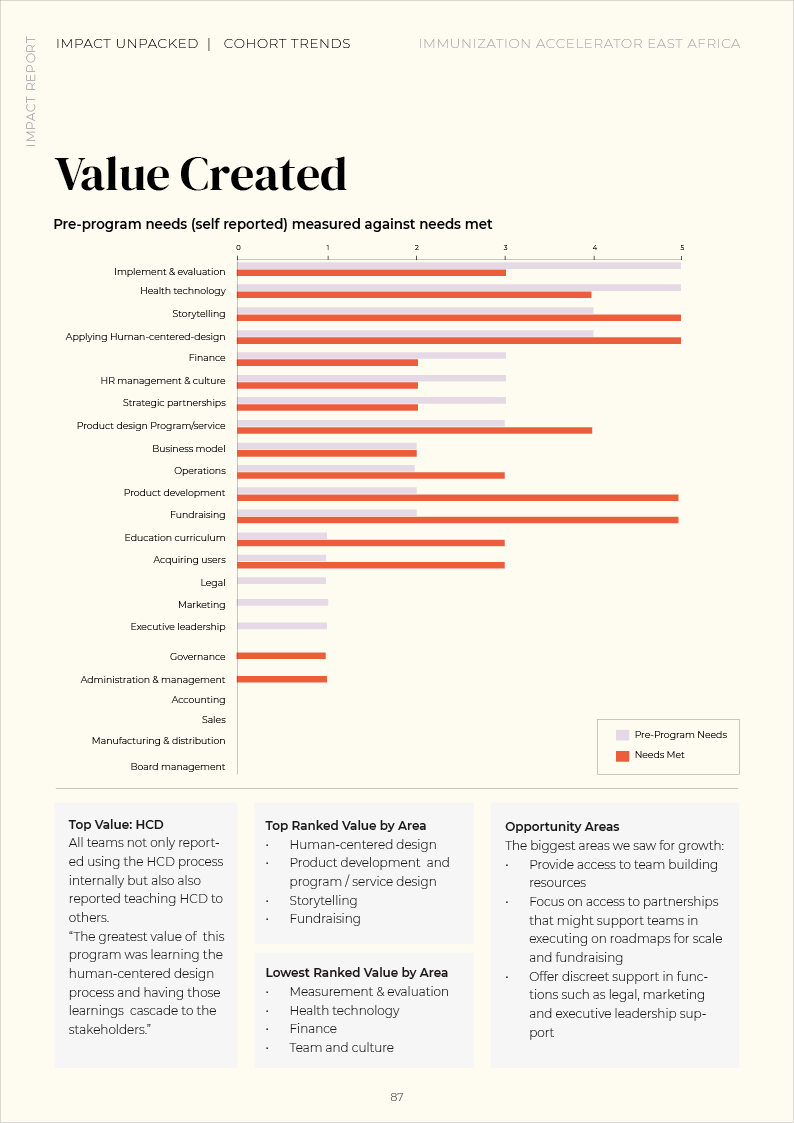

︎

Empowering Young Couples
in Rural Ethiopia
In collaboration with IDEO.org and PSI Ethiopia, this project addressed a critical gap in reproductive health support for married adolescent girls in rural Ethiopia. While motherhood remained a primary aspiration for these young women, they lacked essential information and agency to pursue healthy pregnancies safely.
PROJECT FAMILY PLANNING IN RURAL ETHIOPIA
SECTOR PUBLIC HEALTH
ORGANISATION IDEO.ORG PARTNERING WITH PSI ETHIOPIA
ROLE CO-LEADING PROJECT | HUMAN CENTERED DESIGN | SERVICE DESIGN
LOCATION ETHIOPIA & NAIROBI
CONTENT COURTESY IDEO.ORG
PROJECT DURATION 4 MONTHS
KEY METHODOLOGIES & TOOLS
HUMAN CENTERED DESIGN | USER JOURNEY MAPS | ECOSYTEM MAPS | QUALITATIVE INTERVIEWS SYNTHESIS WITH TEAM | EVALUATION MATRIX | DESIGNING OF COMMUNICATION ASSETS
SECTOR PUBLIC HEALTH
ORGANISATION IDEO.ORG PARTNERING WITH PSI ETHIOPIA
ROLE CO-LEADING PROJECT | HUMAN CENTERED DESIGN | SERVICE DESIGN
LOCATION ETHIOPIA & NAIROBI
CONTENT COURTESY IDEO.ORG
PROJECT DURATION 4 MONTHS
KEY METHODOLOGIES & TOOLS
HUMAN CENTERED DESIGN | USER JOURNEY MAPS | ECOSYTEM MAPS | QUALITATIVE INTERVIEWS SYNTHESIS WITH TEAM | EVALUATION MATRIX | DESIGNING OF COMMUNICATION ASSETS
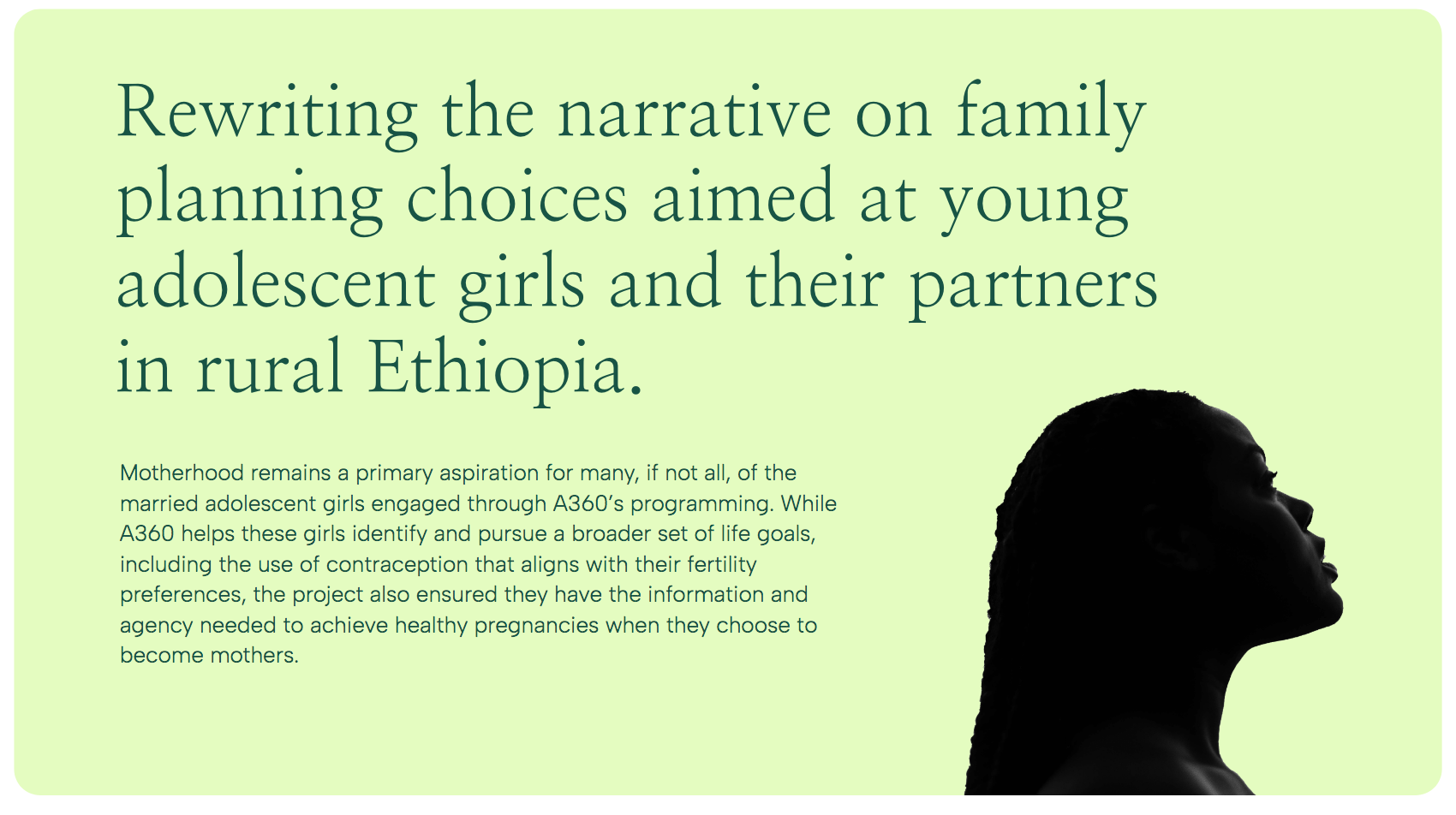
The Challenge...
centered around tackling embedded power dynamics and systemic barriers that limited girls' access to antenatal care, proper nutrition guidance, and continuous reproductive health services.
Our Research Process

01
...understanding the pregnancy journey and where intervention or support might be needed

02
..identifying challenges pertaining to cultural, societal or institutional spheres of influence

03
...concluding key parameters and constraints for young couples
Designing first prototypes

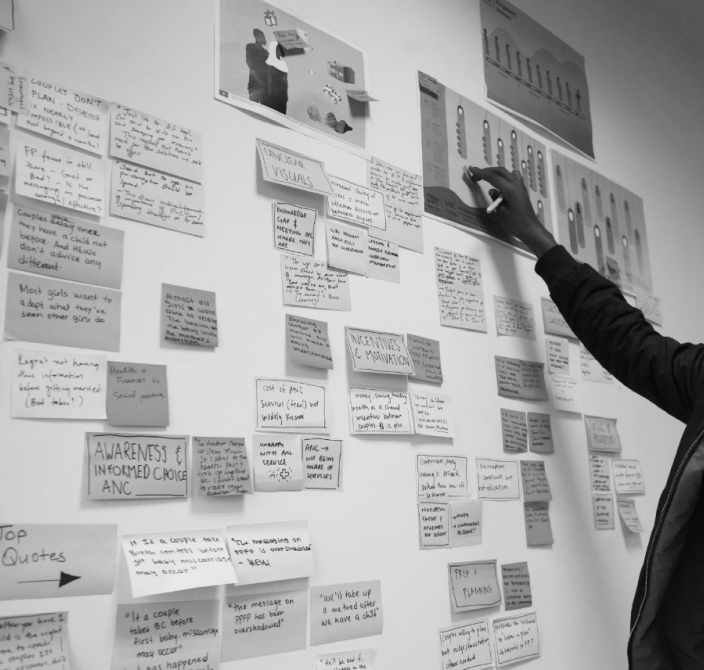
04
Our research revealed that traditional customs and social structures often excluded young women from decision-making about their own pregnancies.
![]()
![]() 05
05
We designed interventions that focused on shifting mindsets, building agency, and addressing power imbalances that created barriers to care.
Testing in the field...

06
Locations & number of people we planned to interview
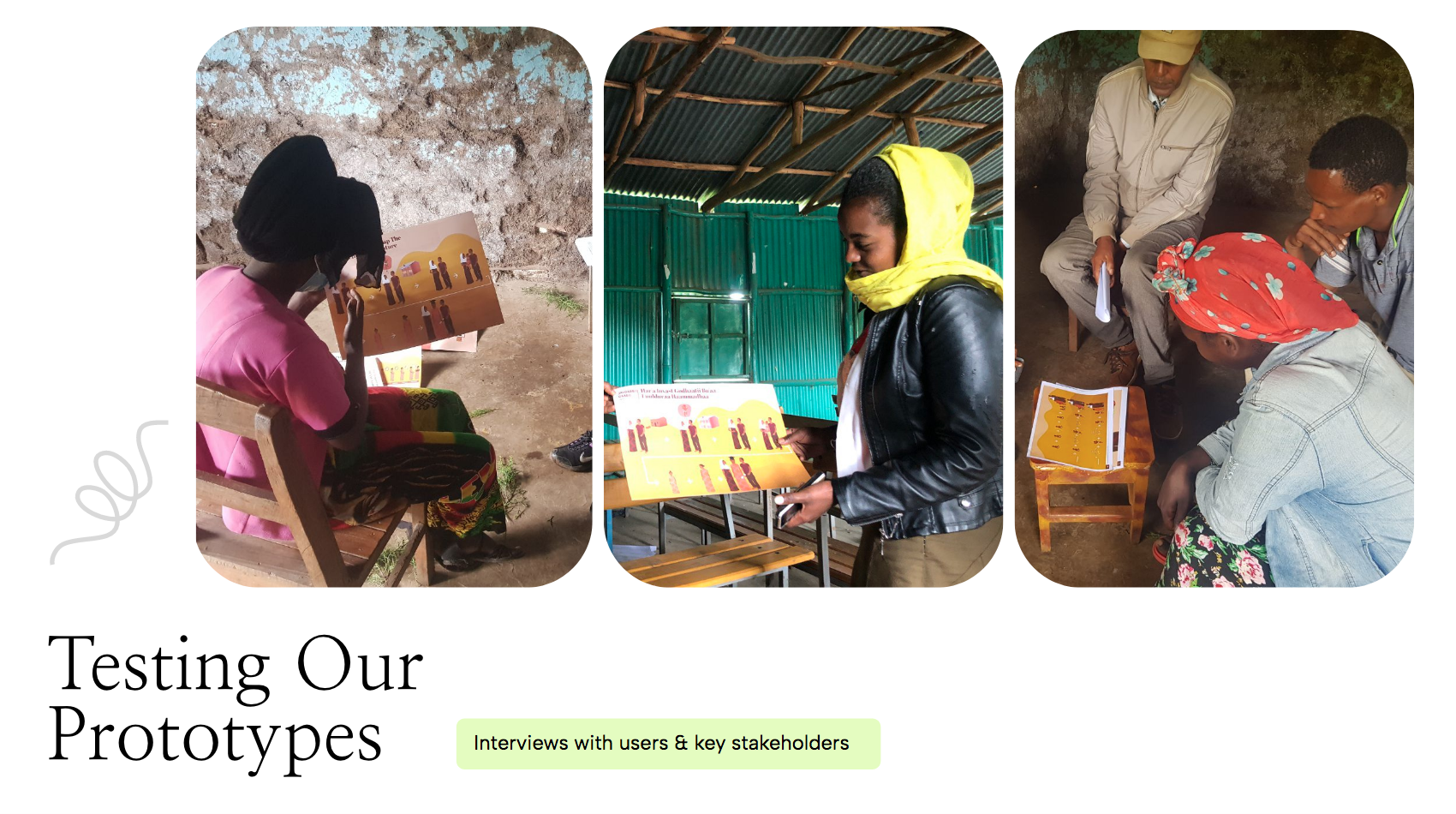
07
We tested 6 prototypes in 2 locations

Synthesis of field research...
08
according to the feedback we had gotten. Our final tools aimed to transform
the conversation around reproductive health from individual burden to shared
responsibility, empowering young women while engaging their support networks
in ensuring safer pregnancies and continued family planning access.
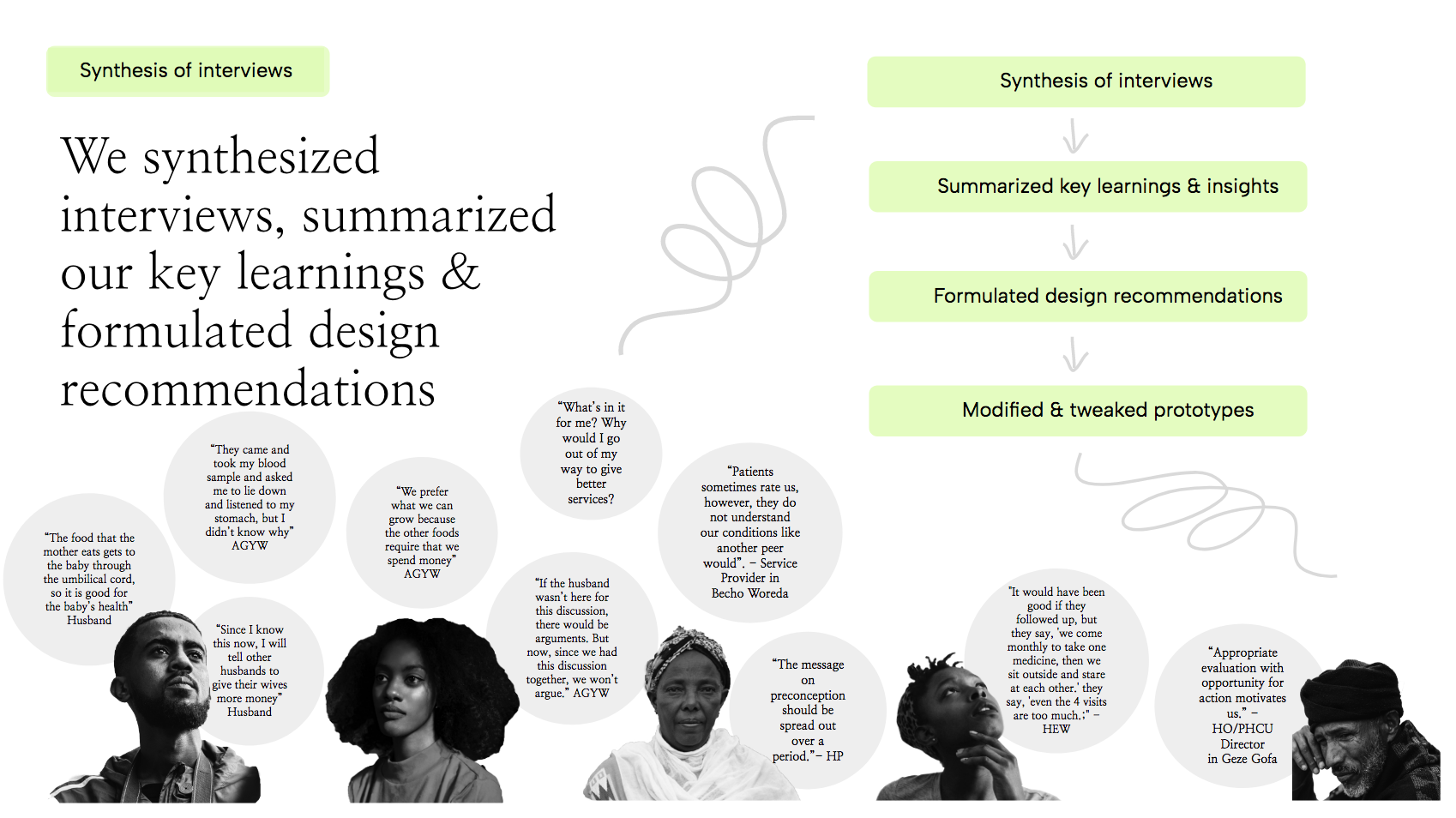
Designing final prototypes...
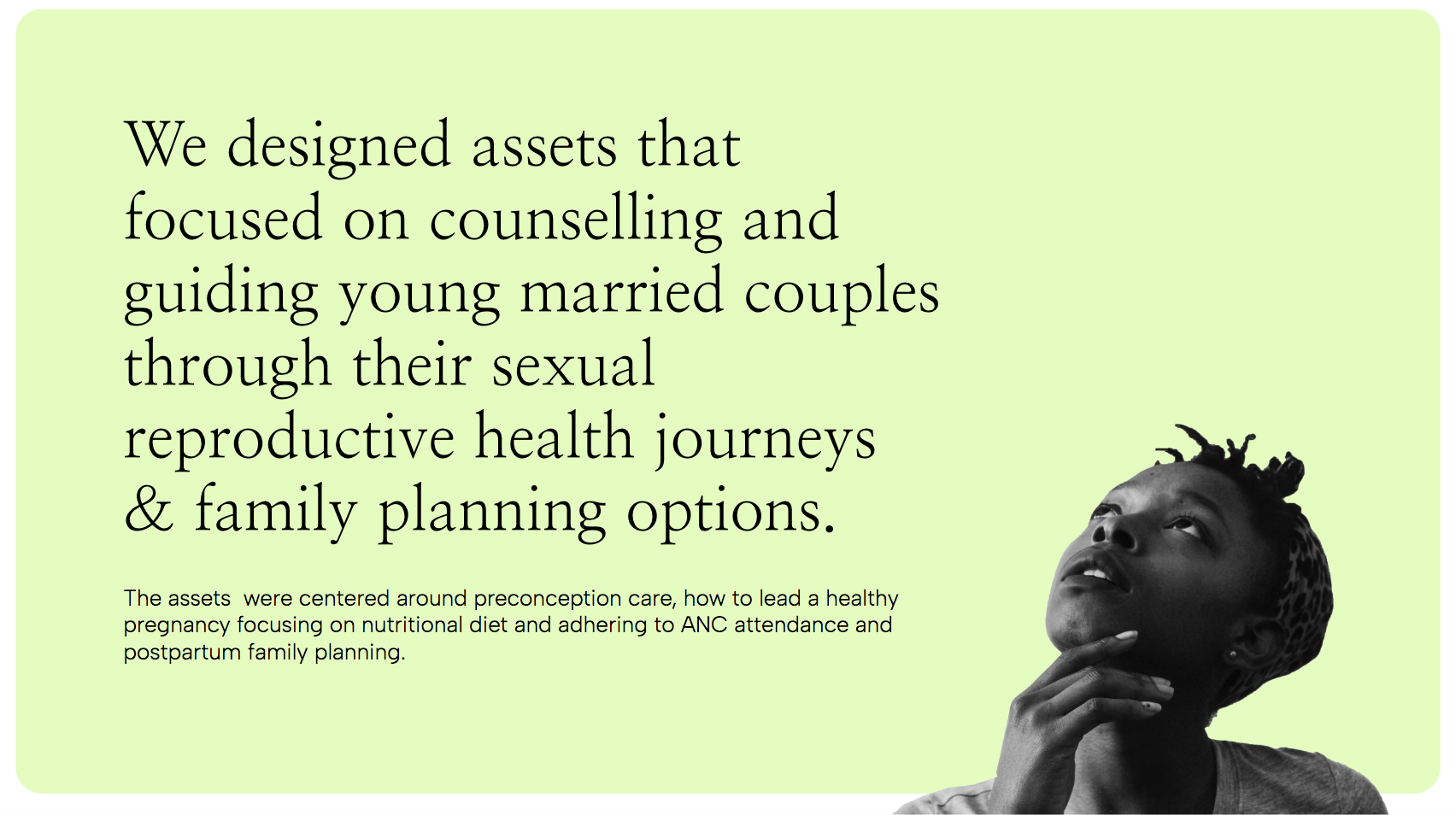
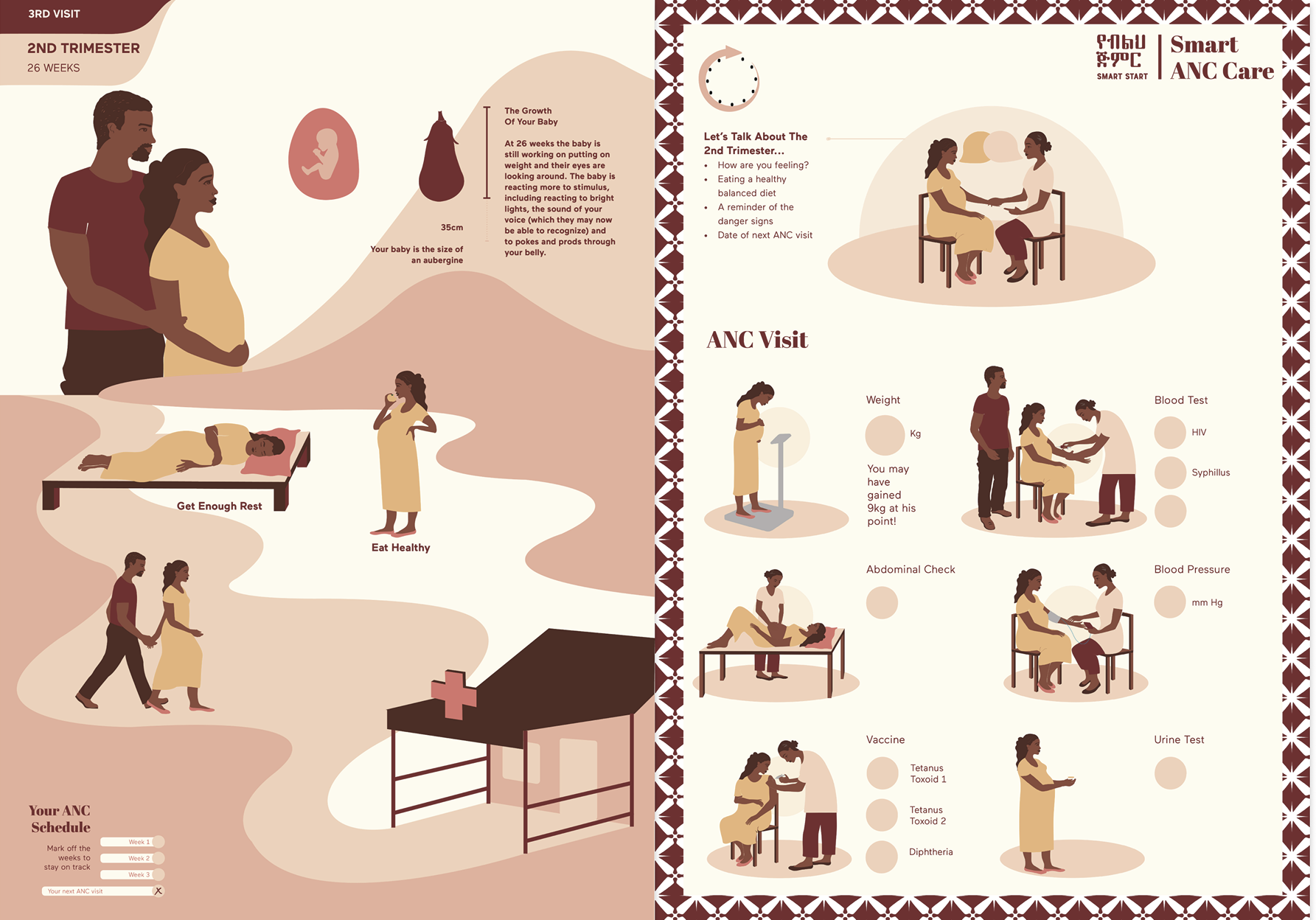
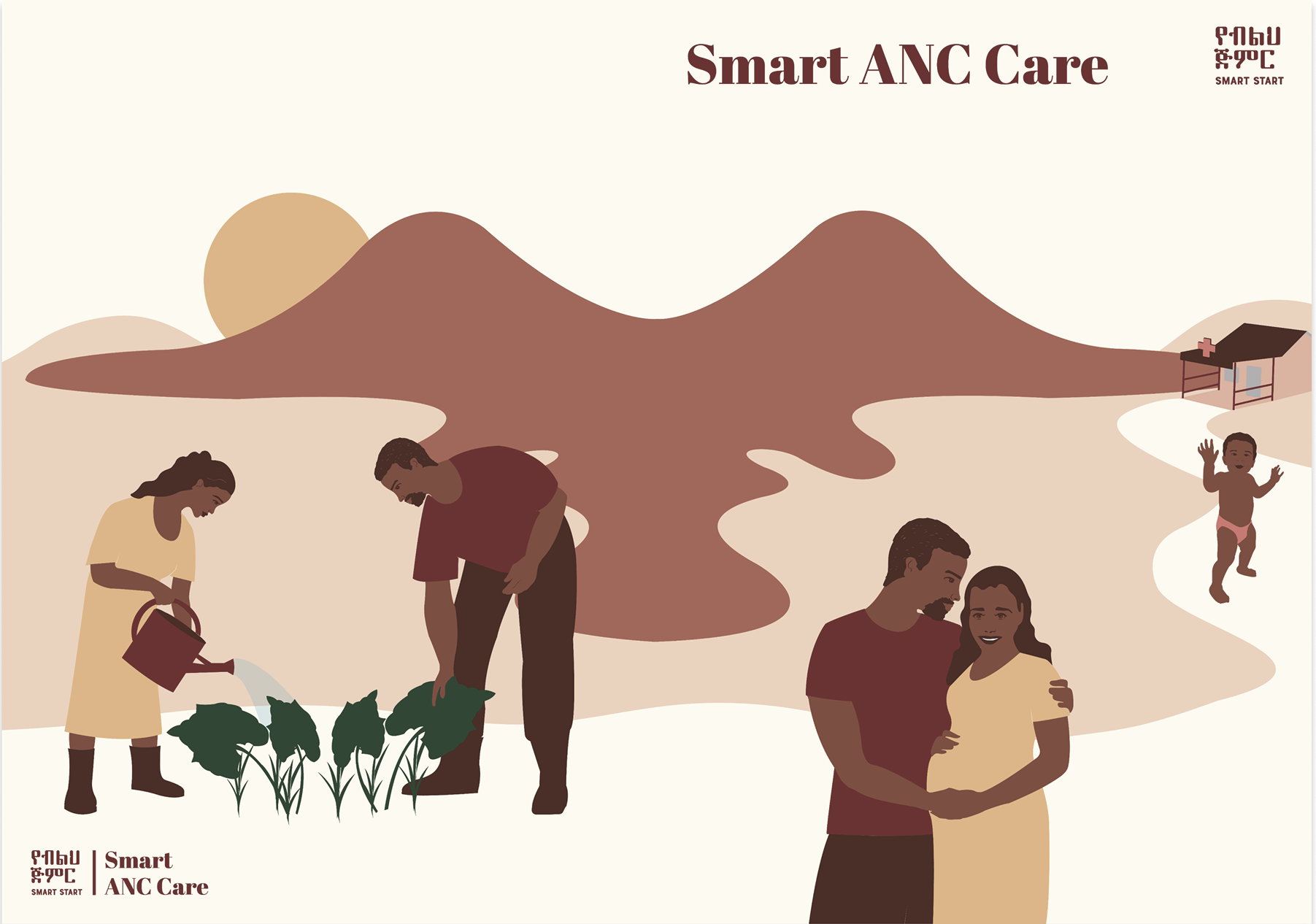
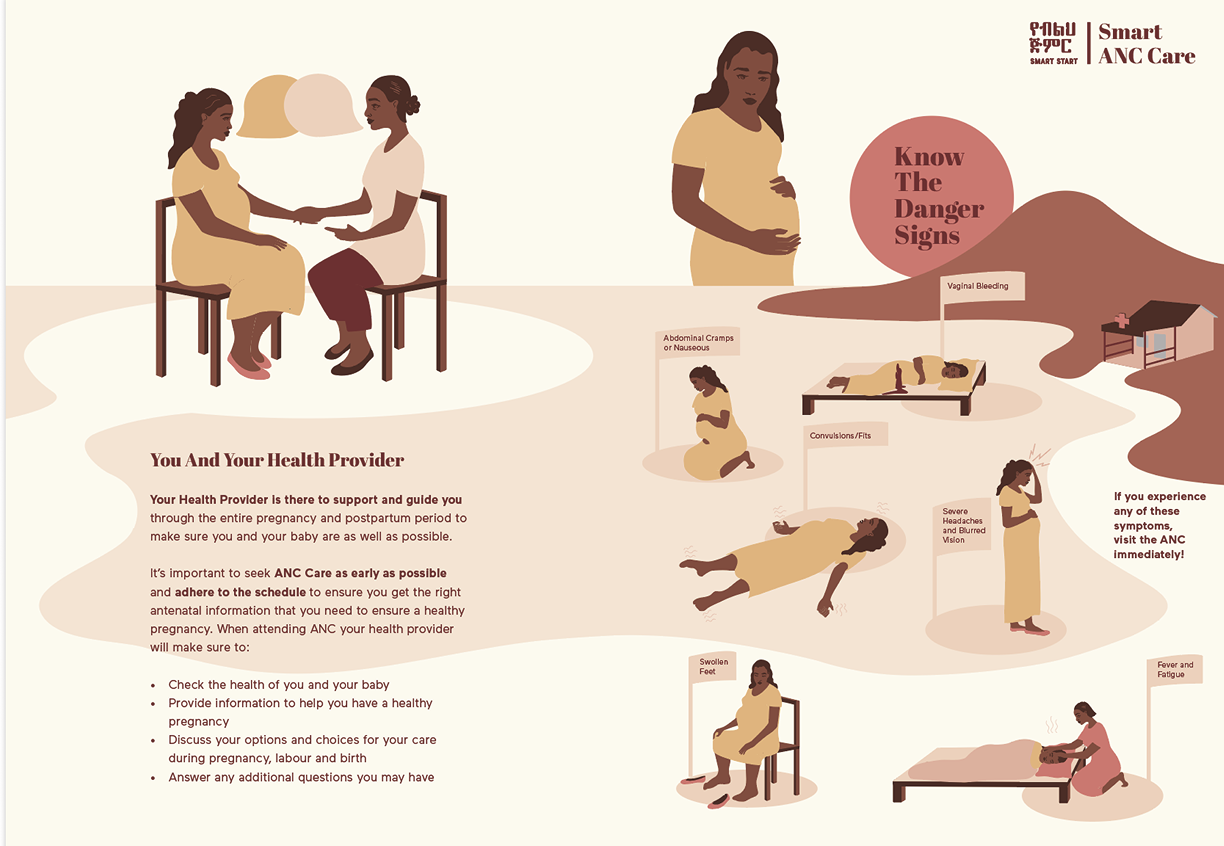
FINAL PROTOTYPE
Smart ANC Tracker
This leaflet guides young couples through the complete pregnancy journey, providing developmental information, danger sign recognition, and ANC checklists to encourage joint decision-making and care adherence.
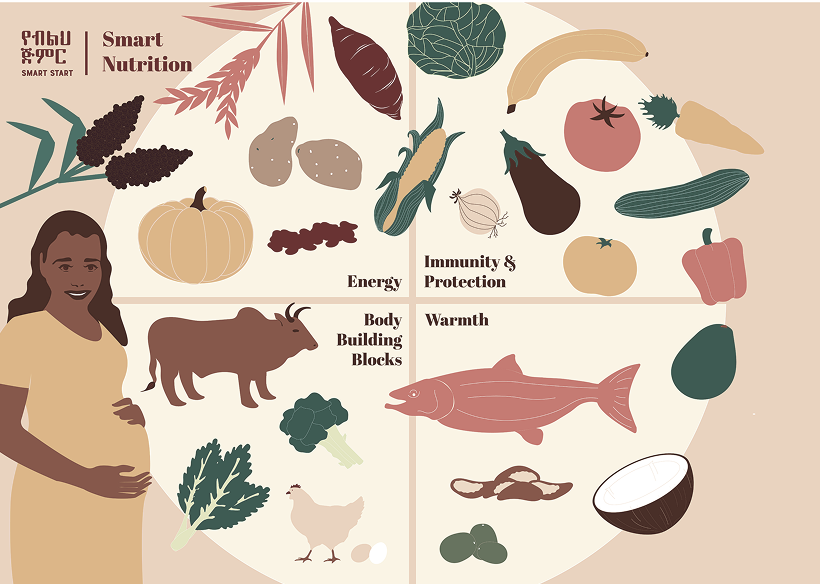
FINAL PROTOTYPE
Smart Nutrition
The guide delivers clear, accessible guidance on essential nutrition and supplements for healthy pregnancy illustrated in a culturally relevant way.︎

Deveoping Sanitary Hygiene Solutions For Communities In Kenya
In partnership with ZanaAfrica, we set out to develop disposable and hybrid diapers that would meet the critical needs of low-income Kenyan families.
The current reality for Kenyan families using low-cost diapers is concerning. These products typically contain substandard materials resulting in inadequate absorption, frequent leaking, and significant discomfort for babies.
PROJECT DEVELOPING SANITARY HYGIENE SOLUTIONS
ORGANISATION ZANAAFRICA
ROLE PROJECT MANAGEMENT | USER & MATERIAL RESEARCH | PRODUCT DEVELOPMENT
LOCATION NAIROBI
CONTENT COURTESY ZANAAFRICA
PROJECT DURATION 10 MONTHs
KEY METHODOLOGIES & TOOLS
DESIGN RESEARCH PLANNING | USER RESEARCH | MATERIAL RESEARCH | SYNTHESIS & DATA ANALYSIS | PRODUCT DEVELOPMENT | PROTOTYPING
ORGANISATION ZANAAFRICA
ROLE PROJECT MANAGEMENT | USER & MATERIAL RESEARCH | PRODUCT DEVELOPMENT
LOCATION NAIROBI
CONTENT COURTESY ZANAAFRICA
PROJECT DURATION 10 MONTHs
KEY METHODOLOGIES & TOOLS
DESIGN RESEARCH PLANNING | USER RESEARCH | MATERIAL RESEARCH | SYNTHESIS & DATA ANALYSIS | PRODUCT DEVELOPMENT | PROTOTYPING
Our challenge was to create a product that delivers premium-level performance at an affordable price point while reducing health risks, minimizing environmental impact, and addressing the specific requirements of our target users.
The Research Process

01
Material ResearchUnderstanding the diaper's material components and science was crucial for determining which brands to test. I conducted initial research on diaper components to understand their constitution, the function of each material and layer, and quality indicators in disposable, eco-friendly and hybrid products.
Through collaboration with diaper experts, we gained deeper insights into the material science, revealing important differences in quality, construction methods, pricing factors, and overall functionality.

02
User ResearchWe conducted focus group sessions in Nairobi, Kilifi and Homa bay in order to get first user insights for this demographic and understand their specific needs, desires and motivations.
In our second round of testing, participants were given different diaper brands and tested over a period of 6 days. We compared and analysed usage behaviour, product preferences, diaper performance in different situations, needs, desires and challenges when using the diaper.

03
Lab Testing DiapersWe partnered with a Kenyan pharmaceutical company to conduct laboratory testing on disposable diaper, environmentally friendly diapers and hybrid diaper inserts. They tested absorption, retention, and rewet giving us insights into the make up and performance of materials.
Testing Sanitary Products



3 Locations | Nairobi | Homa Bay | Kilifi
Number of participants 45
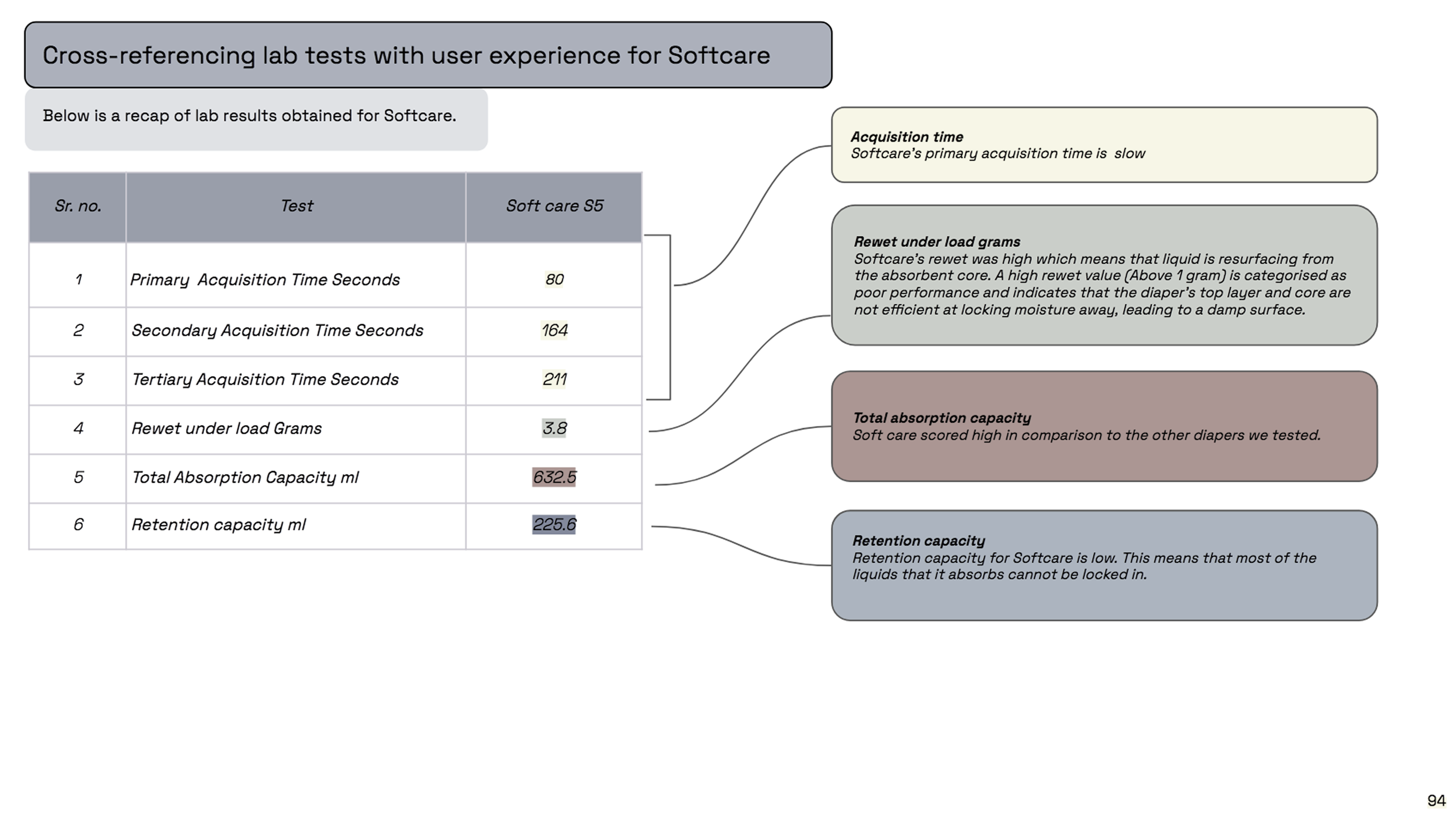
04
Lab Data & User Research CorrelationBy cross-referencing lab data with user experience feedback, we evaluated how well our test results translated to real-world performance and gained significant insights into diaper performance characteristics.
This combined approach revealed correlations between lab metrics (absorption, retention, and rewet) and user outcomes (comfort, leak prevention, and skin health), providing a comprehensive picture of product effectiveness. The methodology also highlighted important discrepancies between laboratory results and actual user experiences.
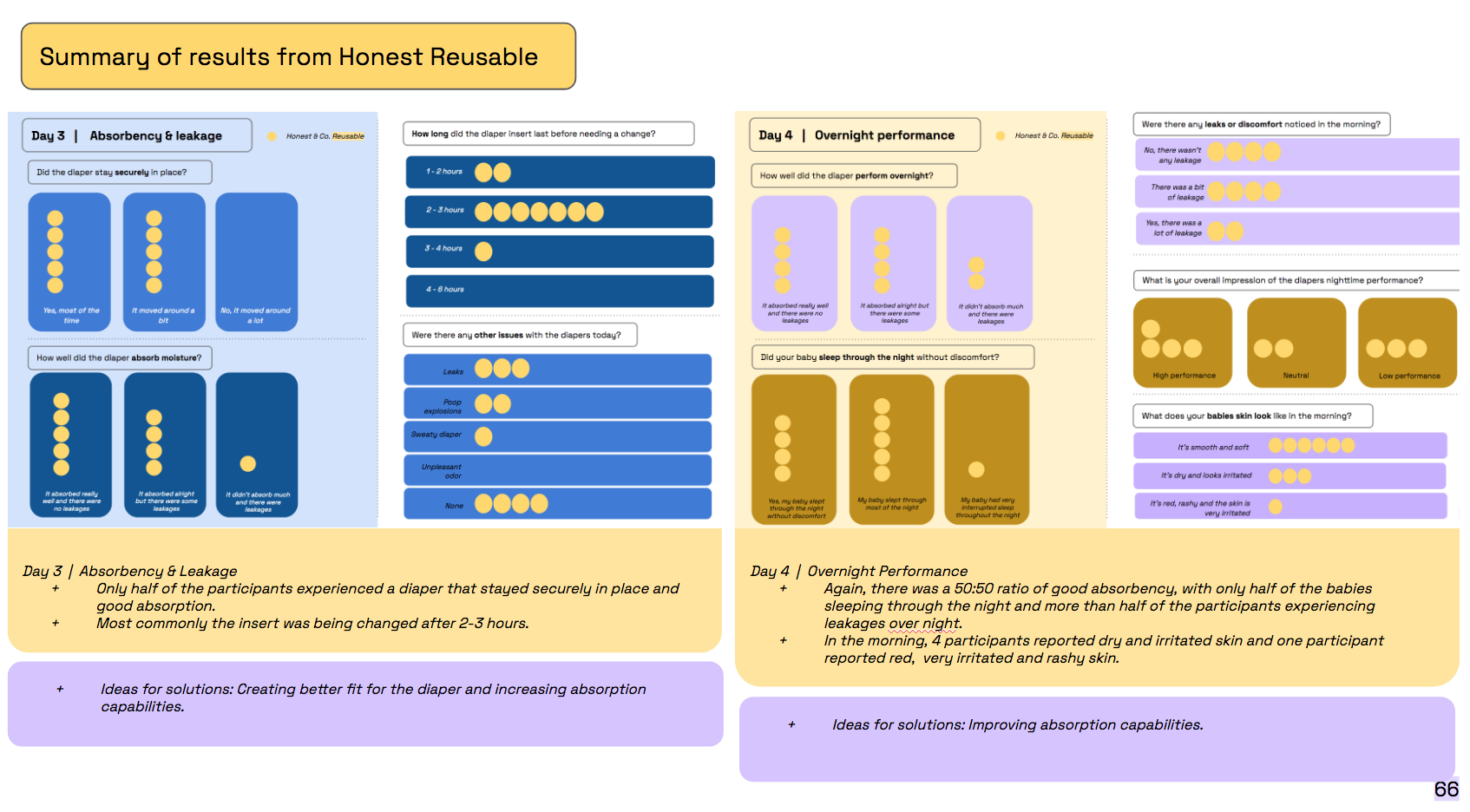
05
Product & Material RatingThis comprehensive analysis revealed which products excelled, identified specific material properties that contributed to adverse health and hygiene effects, and highlighted potential improvements for enhancing eco-friendliness without compromising performance.
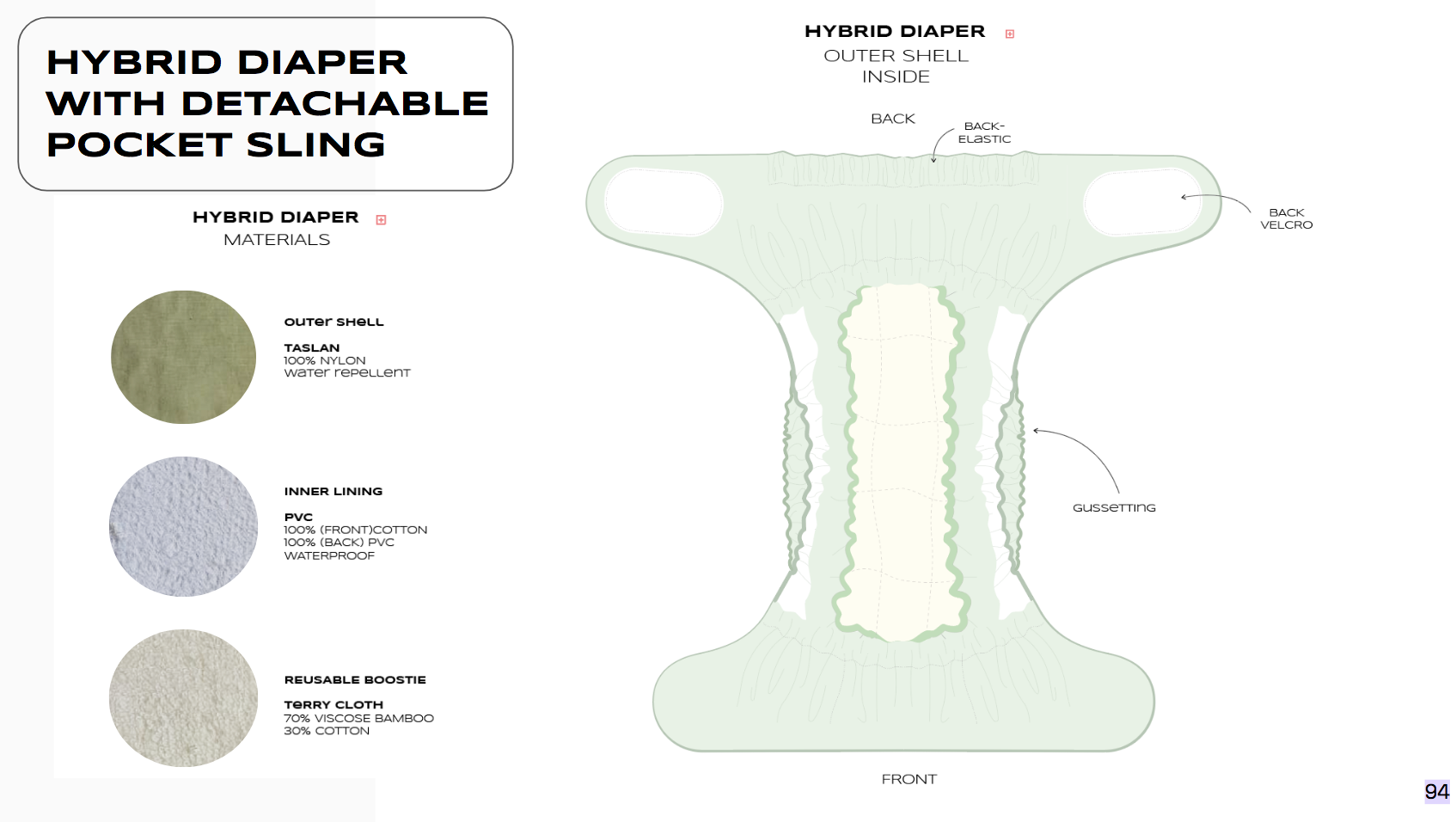
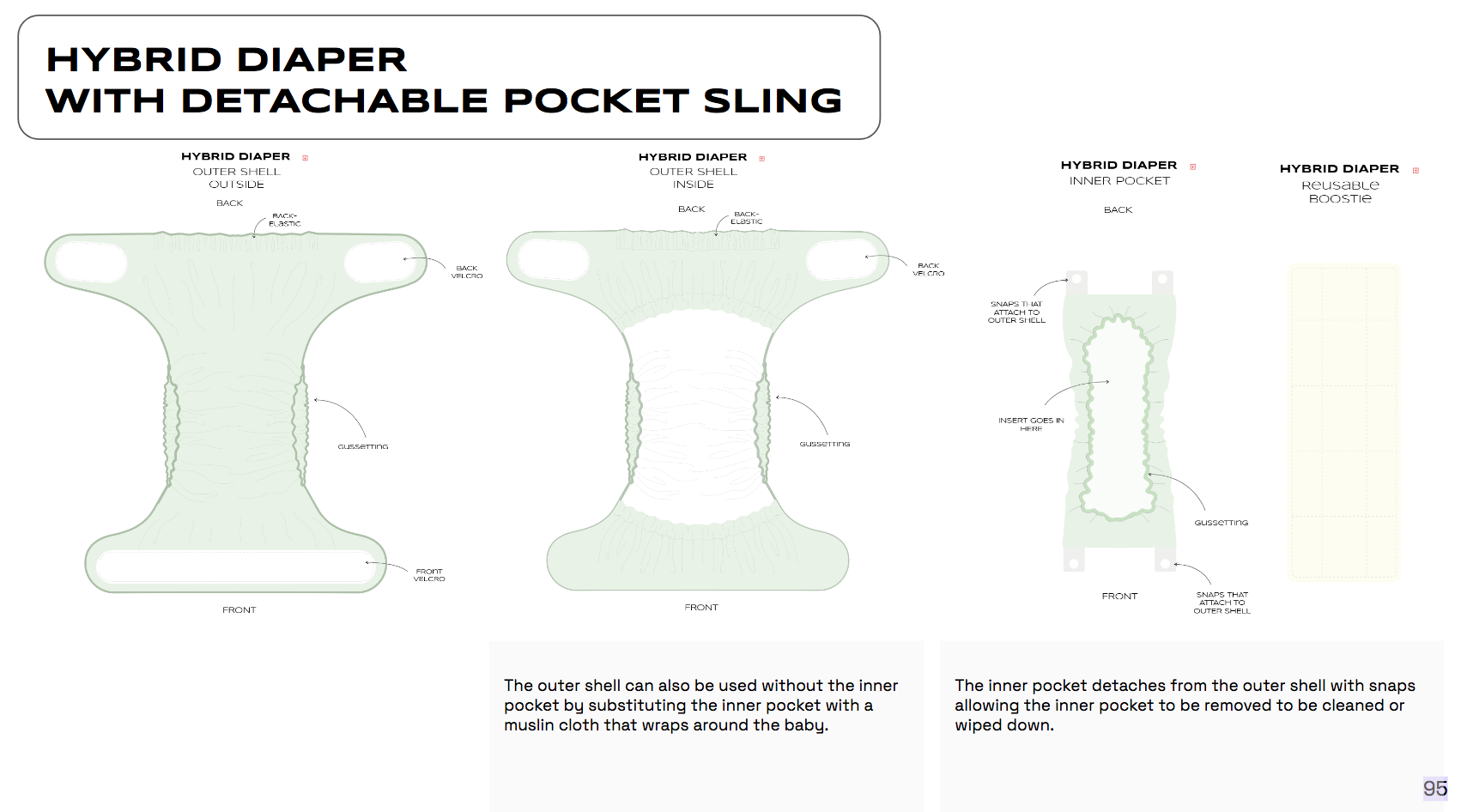
06
Prototyping
During phase 02 and 03 of our project, we set out to prototype and develop a hybrid diaper and pattern construction. We also worked with manufacturers to figure out what the most adequate and affordable strategy would be to produce disposable diapers for the Kenyan market.
︎

Connecting Changemakers
on Gender Mainstreaming
The Chroma Collective is a community of gender practitioners, doers, experts and problem solvers from a variety of leading donor and financing institutions from around the world.The Collective works to effectively integrate gender within and across international developmen systems addressing gaps, norms, beliefs and values that can lead to gender inequality.
The Chroma Collective is a community of gender practitioners, doers, experts and problem solvers from a variety of leading donor and financing institutions from around the world.The Collective works to effectively integrate gender within and across international developmen systems addressing gaps, norms, beliefs and values that can lead to gender inequality.
PROJECT GENDER MAINSTREAMING
ORGANISATION IDEO.ORG
ROLE DESIGN RESEARCH | VISUAL DESIGN
LOCATION NAIROBI
CONTENT COURTESY IDEO.ORG
PROJECT DURATION 1 MONTH
KEY METHODOLOGIES & TOOLS
RAPID PROTOTYPING | BRAINSTORMING & SYNTHESIS | BUILDING WIREFRAMES

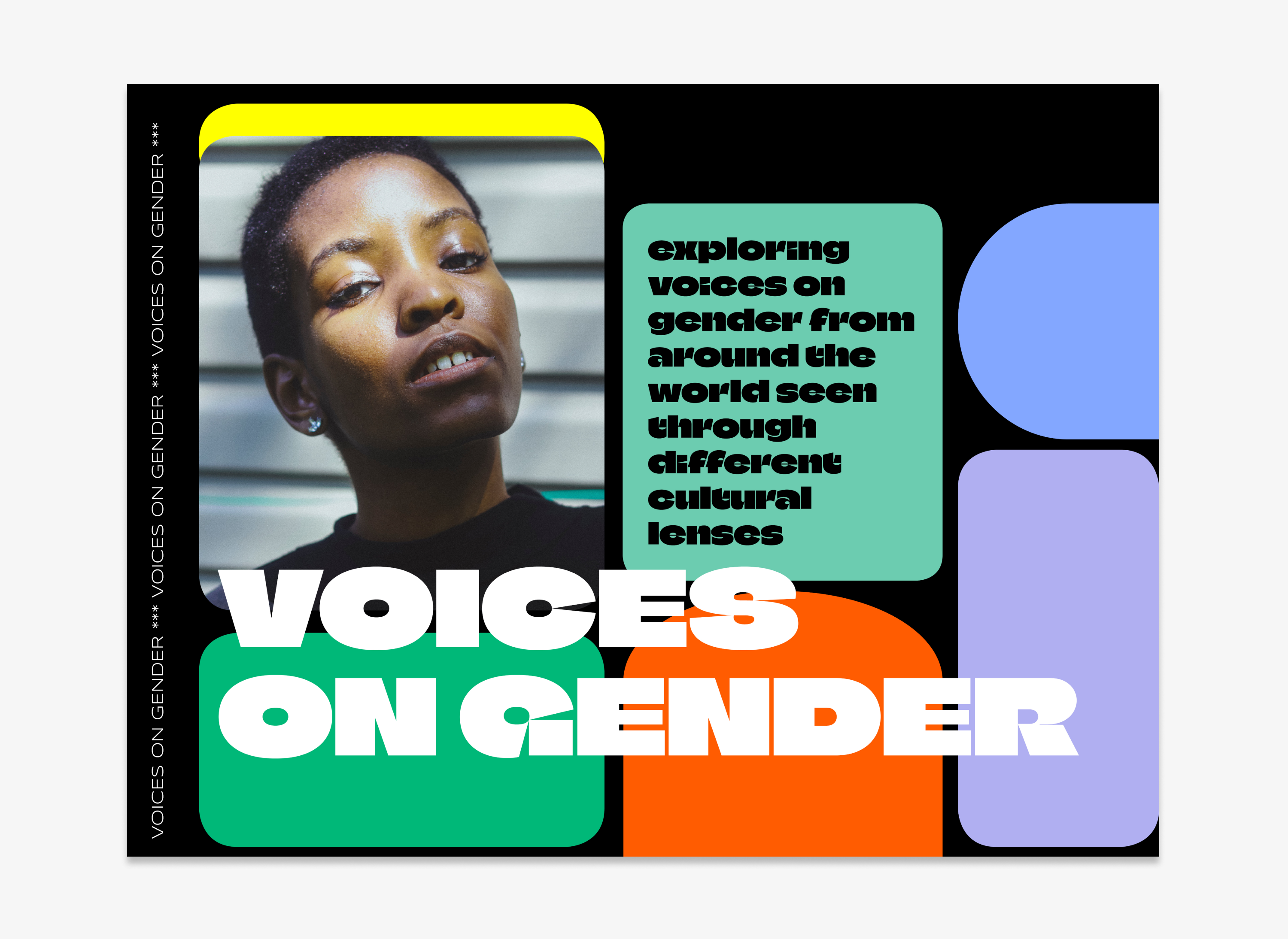



︎The Challenge...
︎Our Objective...
...during this design sprint was focused on how we can better connect members of this community to share and disseminate knowledge and learnings on the topic.︎01
Workshopping ideas
We workshopped a variety of different concepts. Field notes explored how different voices on gender from around the world could be showcased on a platform in the form of stories, photography, or answered prompts. The objective was for organisations and companies working in different regions to gain a more nuanced perspective and understanding on current gender topics.Our final prototype was GM On-The-Go, an online resource platform where Chroma Members can easily connect and share gender mainstreaming related content.
The platform would feature an array of human stories from around the globe, bite-sized learning infos, best practises, resources, impact tracking and a culture of care.

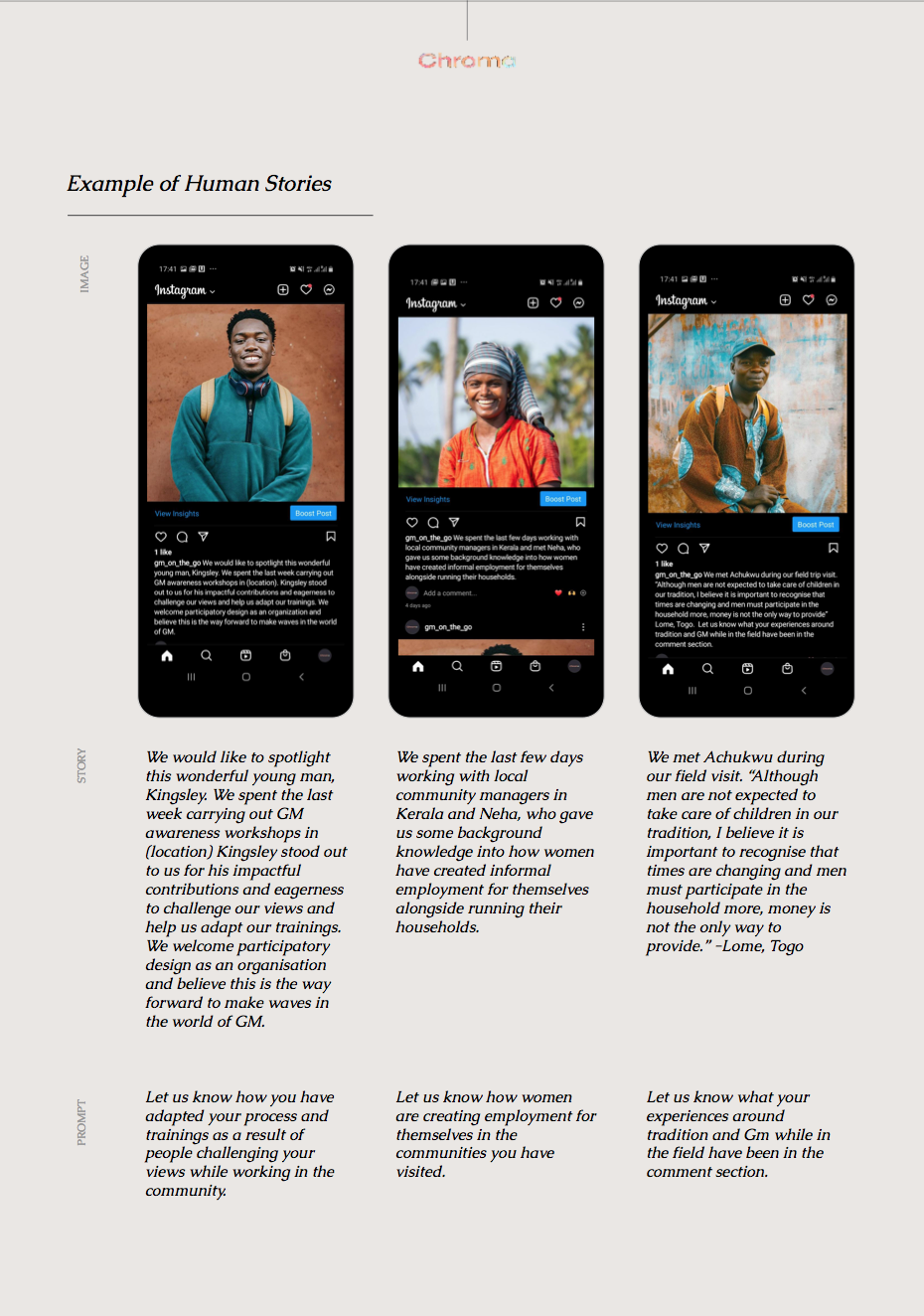
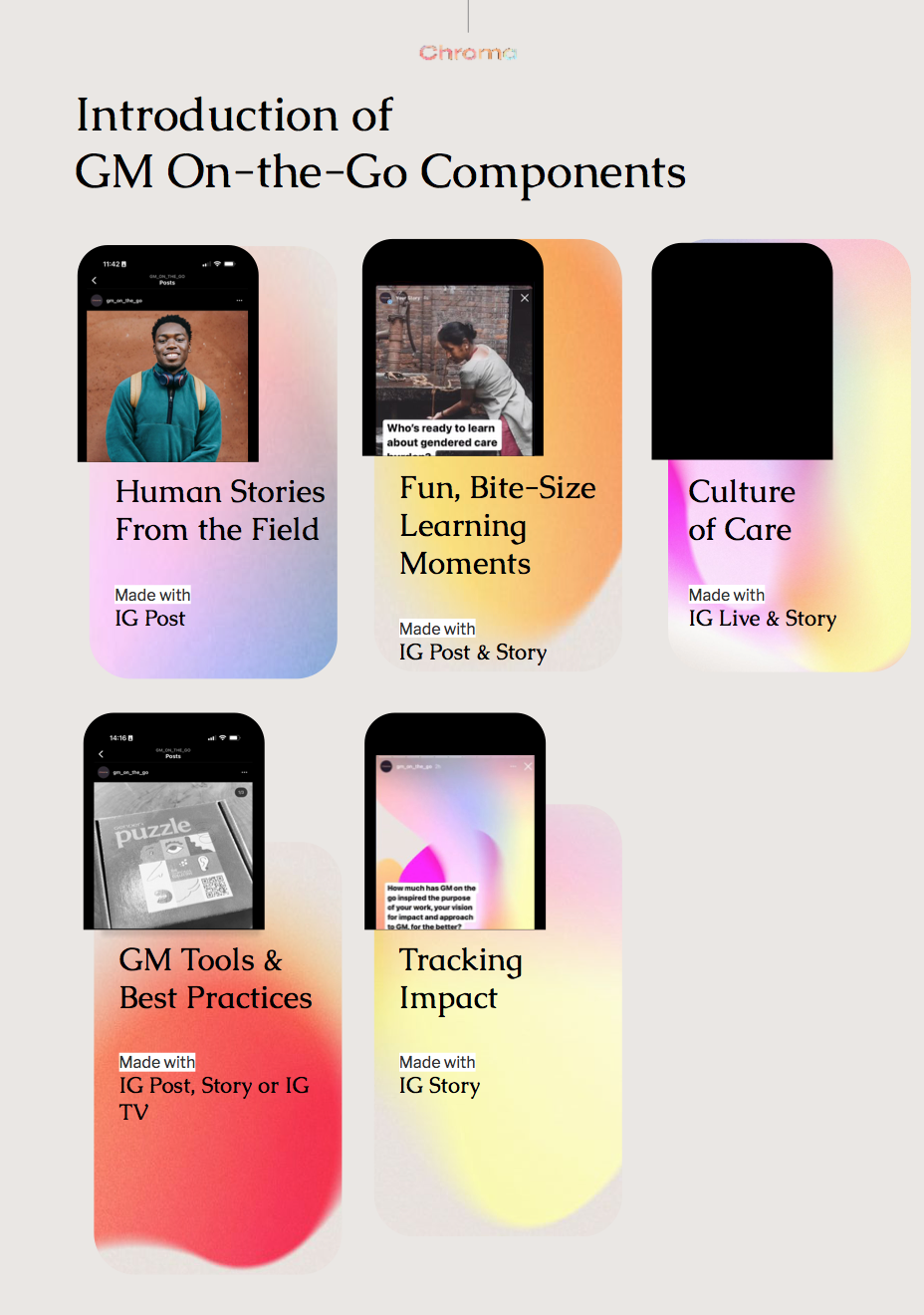





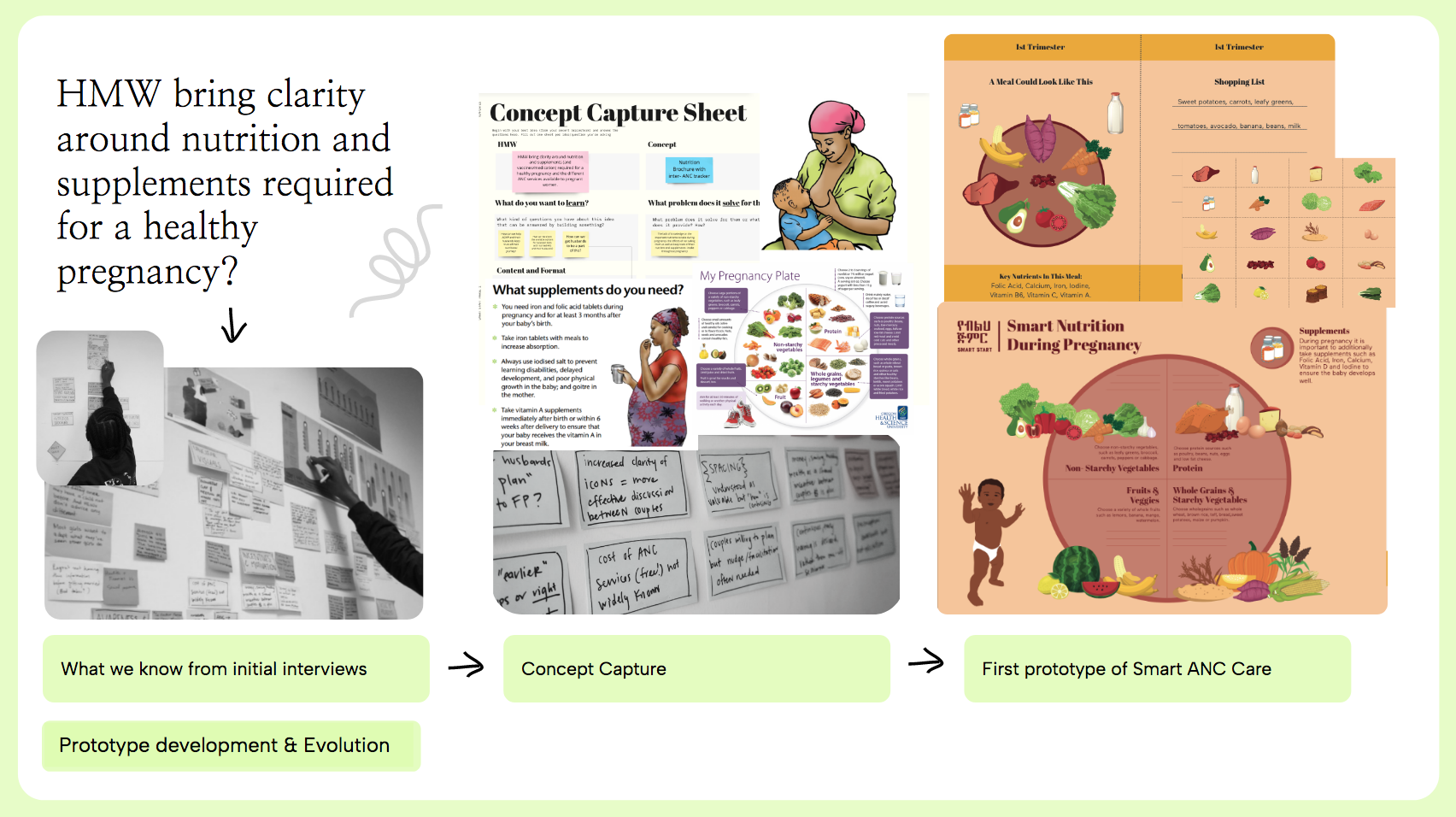
 05
05